May 5, 2019
Martha O'Kennon
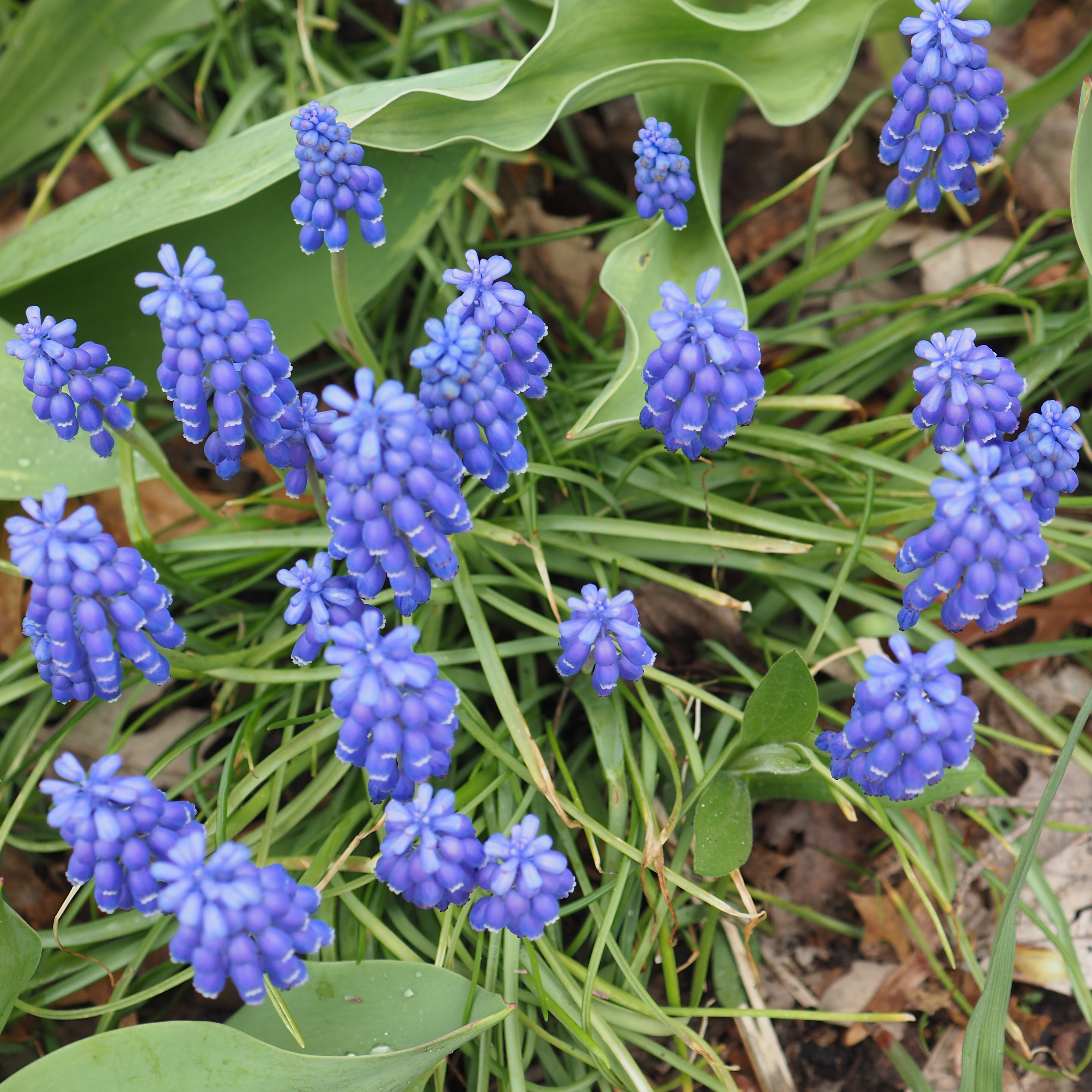
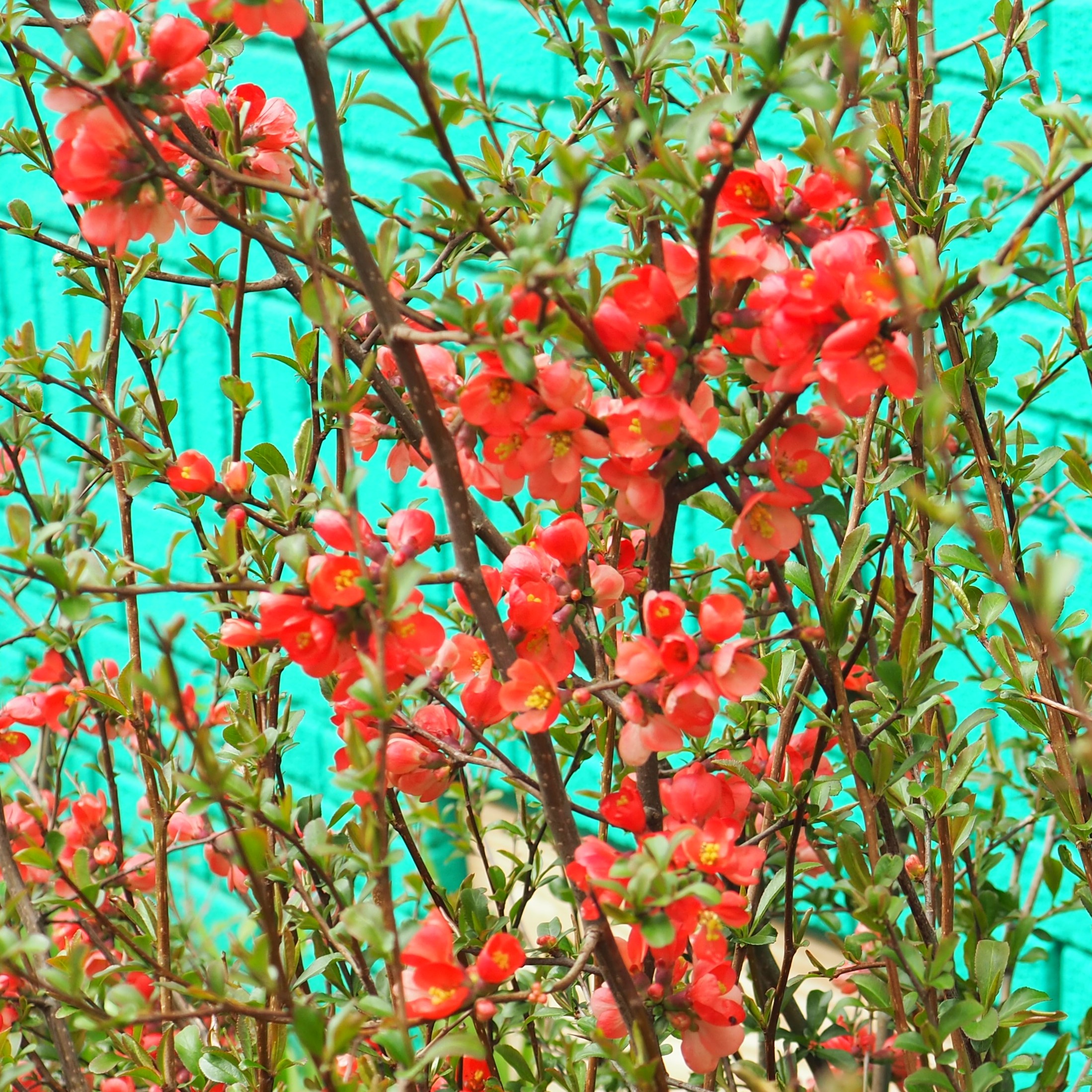

The spring flowers are about at their peak. I'll be showing more pictures of it, but first some of the most prolific bloomers. First, the second wave of grape hyacinths. Then the Japonica at its top show. I wonder if the Orioles have come to it - it is in a place that I can't see it from indoors or front yard or back yard. I have to come out the front door and walk by the driveway to be able to see it in all its orange splendor. Third, the Pulmonaria, pink flowers turning blue almost before our eyes.
Oh, all right, you wore me down. Actually the tulips wore me down. The squirrels have been brutal this year, topping off those beautiful blossoms and leaving a trail of petals along the sidewalk. Wonder if there was a wedding out there. See how the grape hyacinths as naturalized by the squirrels set off the tulips. Those little pointy tulips are the Red Riding Hood tulips. They own the pretty variegated leaves you can see to their left.

Remember that there is information in the name of the file for each image. You can see it by mousing over the image - look at the lower left of the screen. Or you can click on the image to get to the (usually) larger image. Then the info is displayed in the address line above. Sometimes the second click will actually display a different view of the original image.
The variety of ants continues to increase as time goes by. After first seeing the Acrobat Ants on the shop siding last week, this time I discovered two inside the GFI port, only about 2 mm (maybe less) long. I love their heart-shaped abdomens! Second is (ho-hum, once more) an Eastern Black Carpenter Ant. I remember how excited I was when I learned who these big black ants with the bristling yellow abdominal hairs were. This one seems to have picked off a small snack. Third was new this week - the Odorous House Ant. I understand they really do have a scent if you get close enough to take a sniff.
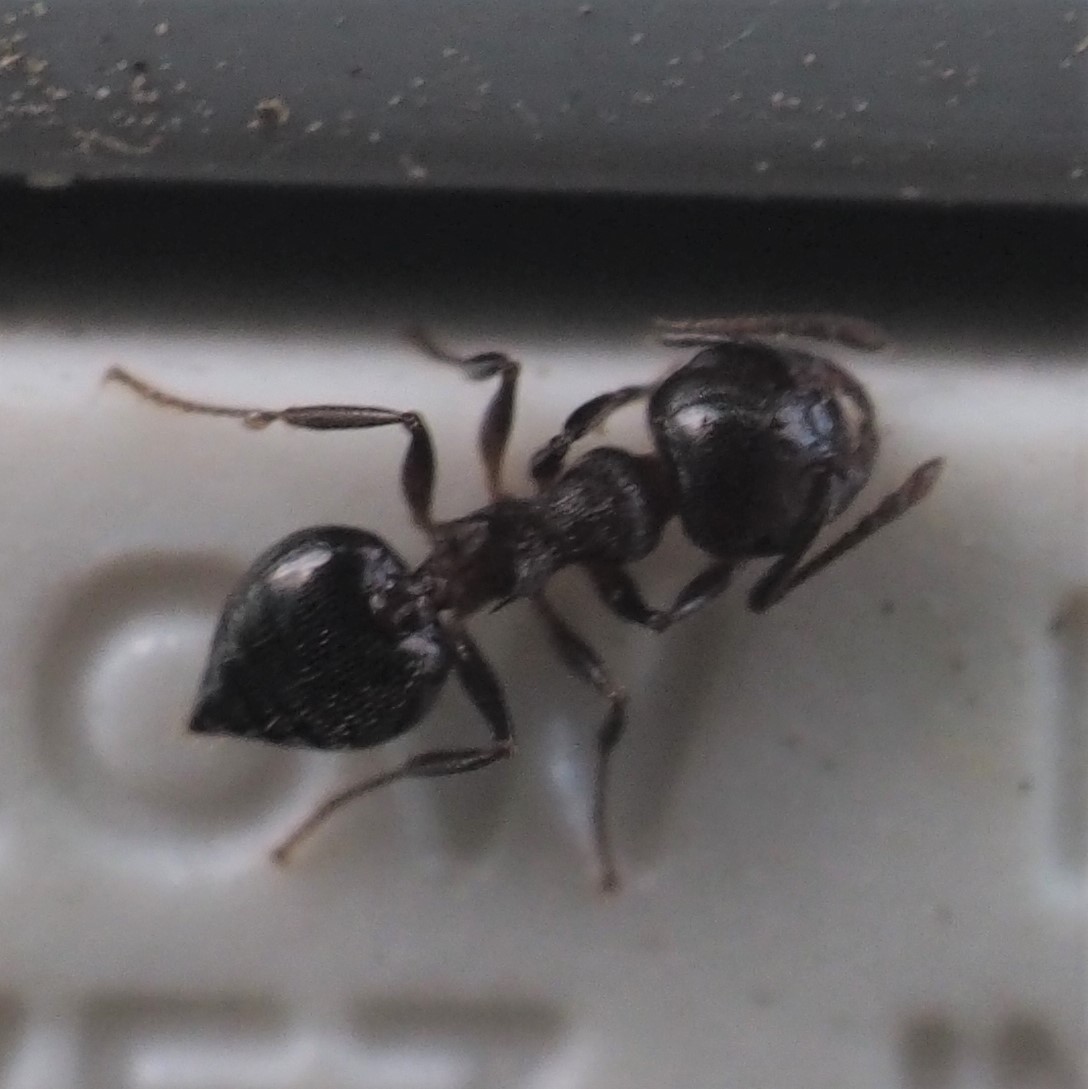
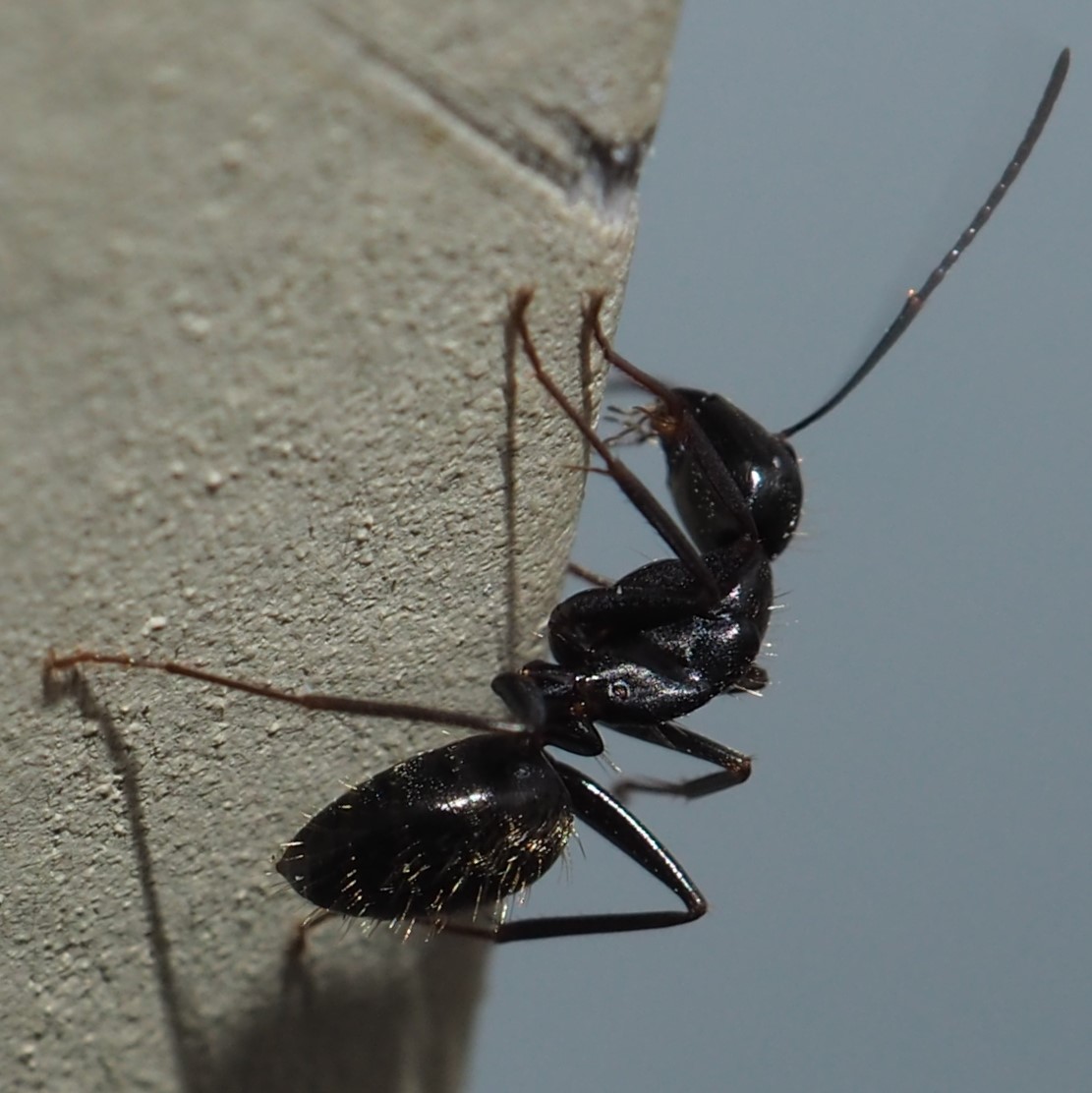
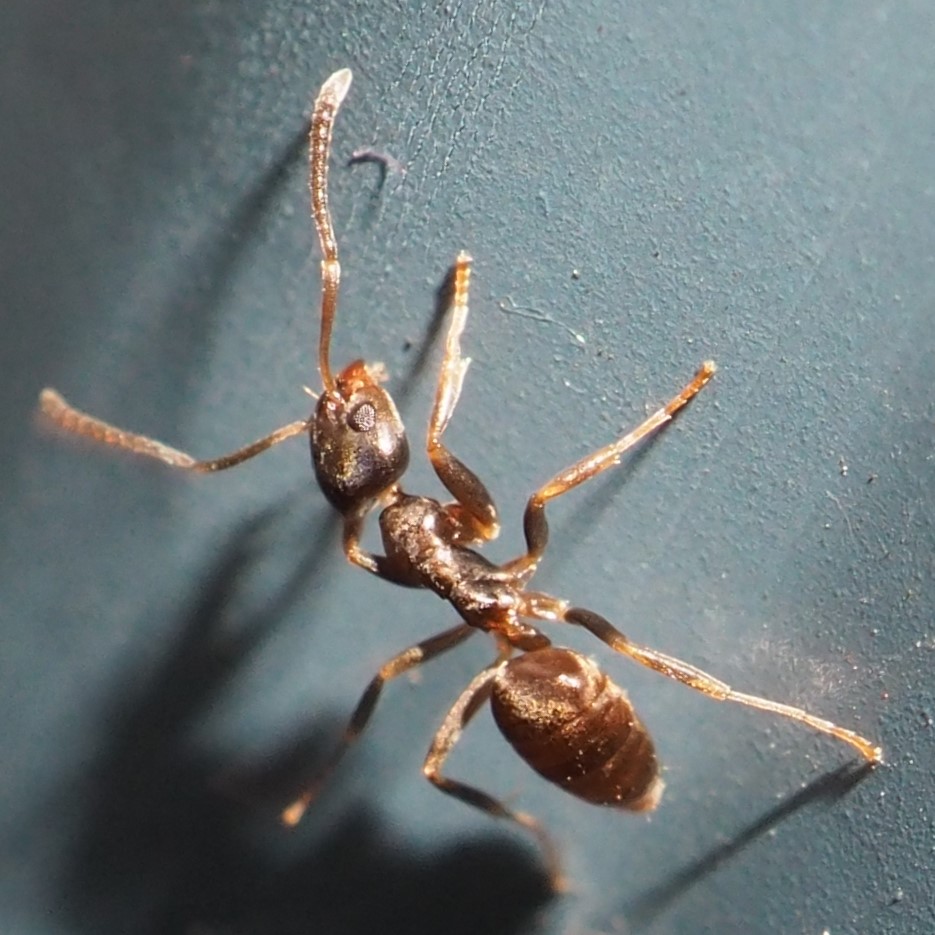
Here is another Smaller Carpenter Ant. Note that it has respectable abdomen hairs too, but has reddish legs, something the Eastern Black would never have (in my copious experience). It also has some red on its thorax. By now you might recognize the Small Honey Ant. Third was my bag of the week: Can you imagine being face-to-face with this ferocious-looking creature? It certainly was saying, "Don't take my picture, you measly human." It was identified to genus Formica.


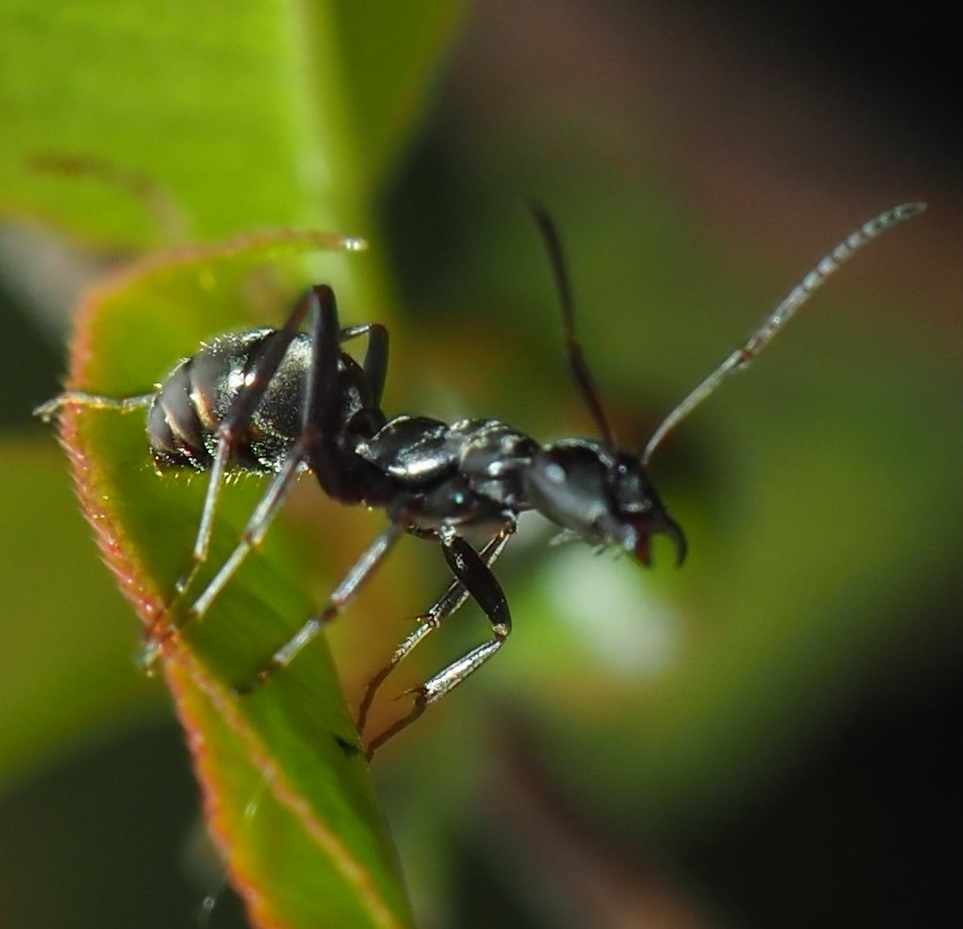
I've taken to lugging my folding chair out front to visit the ant hill, and am finding that there are often little surprises. The Small Honeys still run in and out of the hill, sometimes in jumbled gangs. But here are some of the other little gifts from yesterday's expedition. In the first image, I found two strange-looking things. One is the small ball-shaped creature - a Springtail! It looks different from the ones we saw a few weeks ago because of its shape. It's called a Globular Springtail. The other strange thing in image 1 is that tall oval-shaped creature that looks as if it is encased in a plastic-film container. I don't have a clue what it might be. Number 2 is a blow-up of the smaller Springtail. Number 3 is a new one. They are all Globular Springtails.
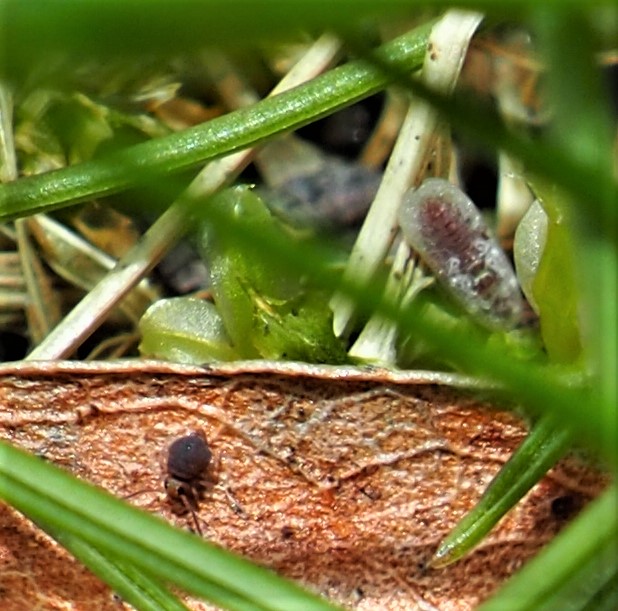
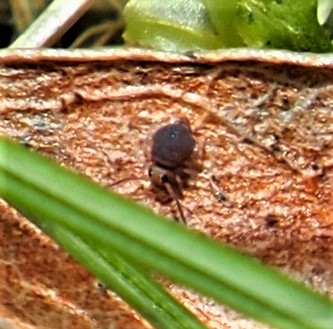
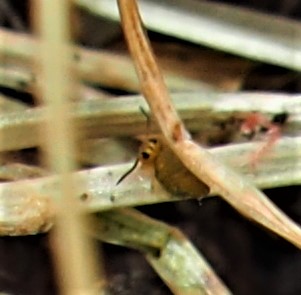
Here are a few more Globular Springtails. Second and third may be the same little yellow Springtail.
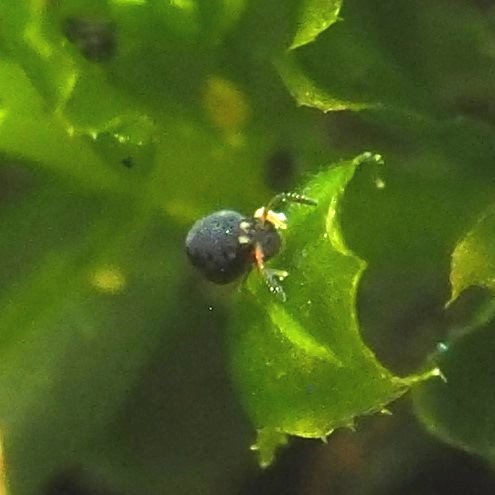
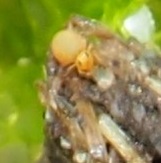
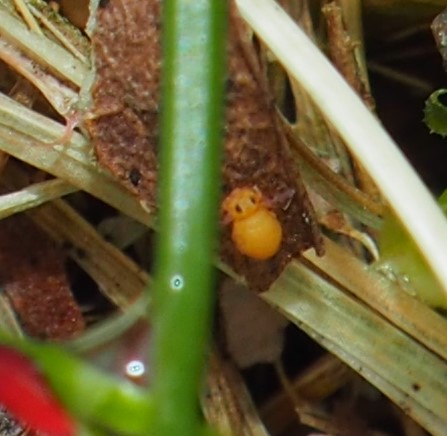
Way down at that level, I also saw a pretty red flower. But since looking at the photo, I'm starting to ask if this is actually a gall on one of those plants. Maybe Picture 1 is a flower and Pictures 2 and 3 are galls?
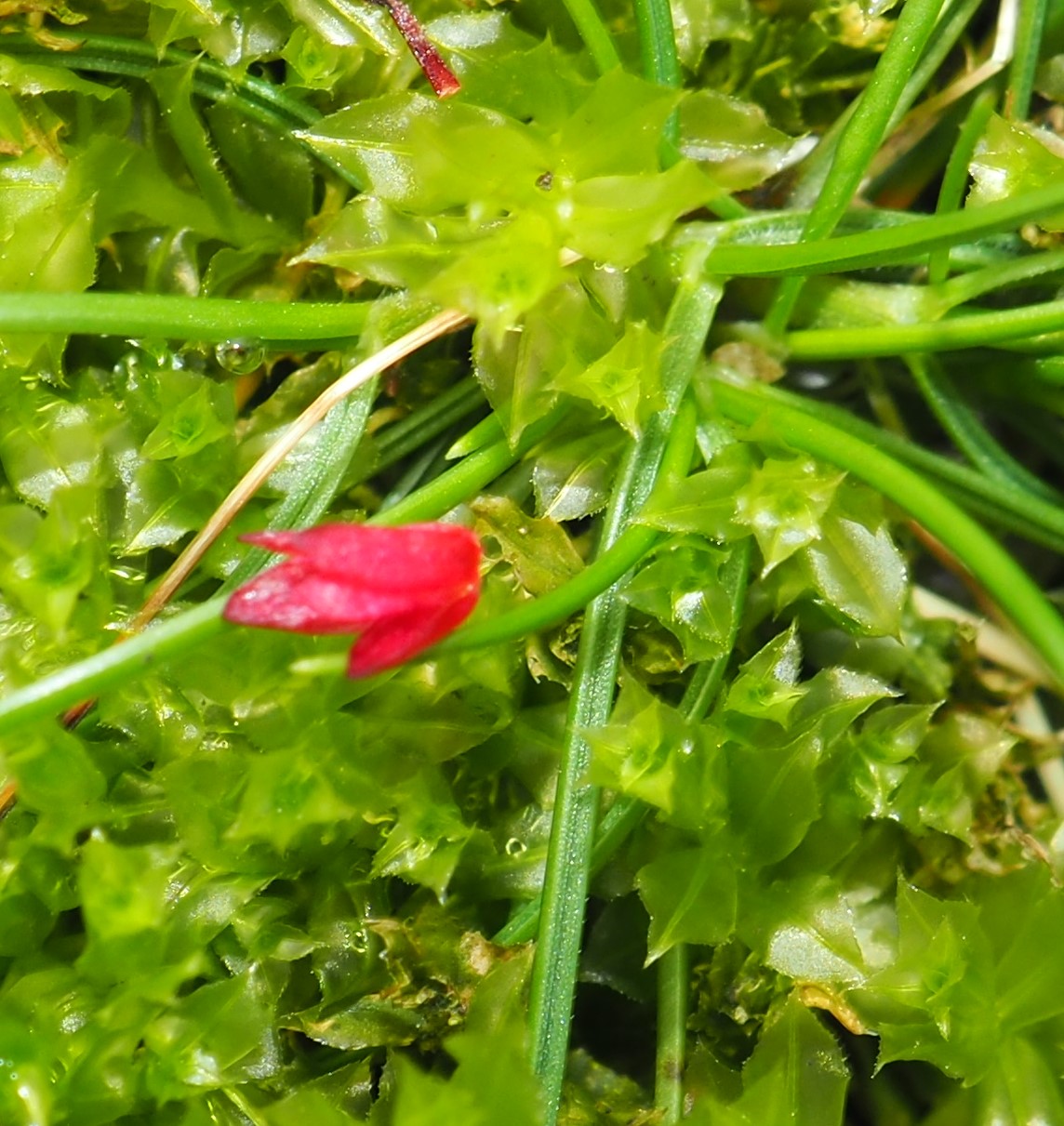
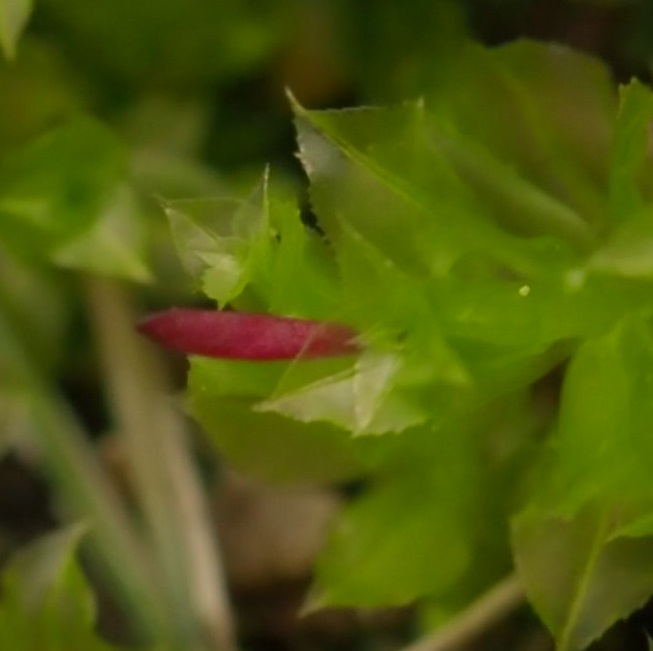
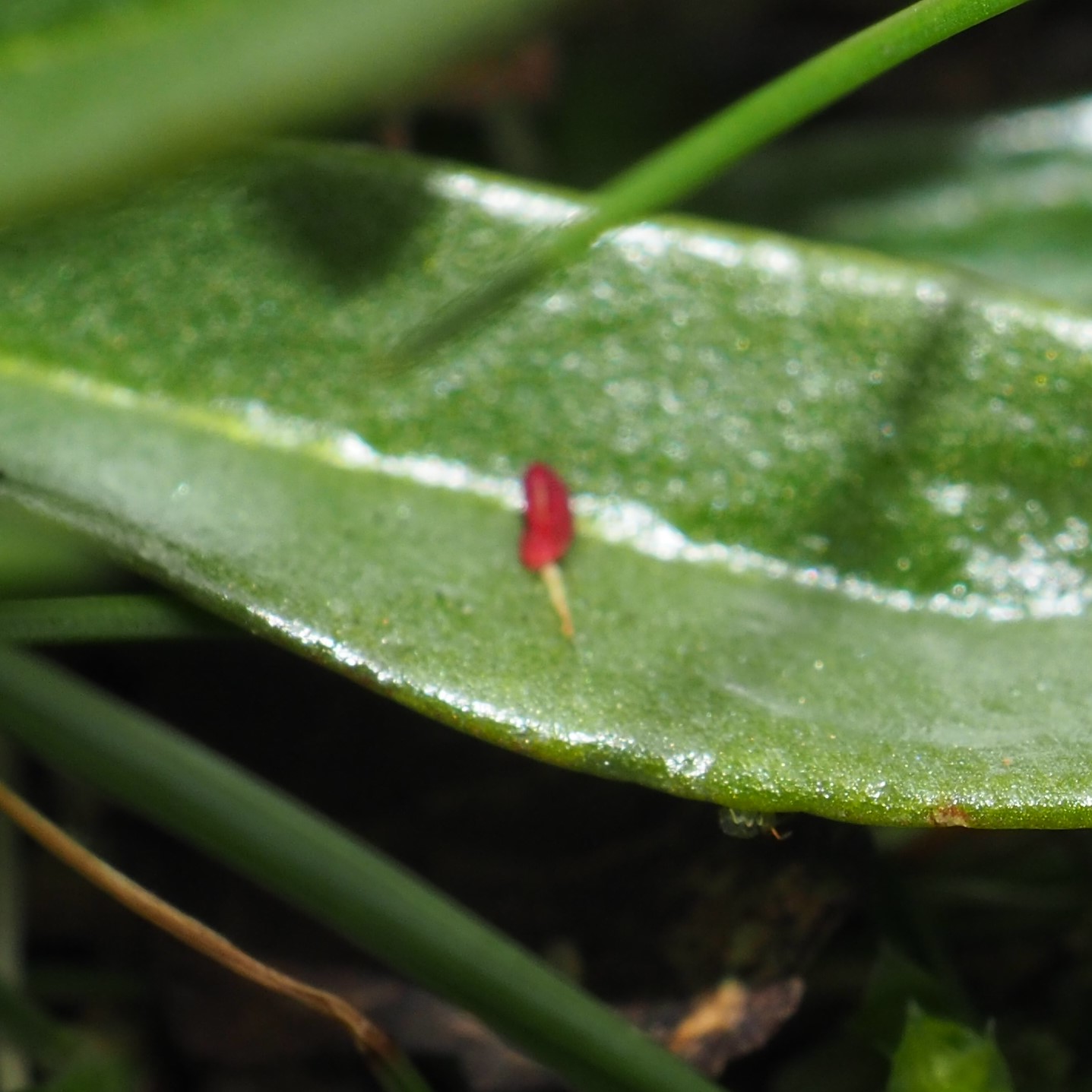
There are bees out there, but they were mostly not in range. The one exception is this lovely little fellow, called a Nomad Bee. It's sitting on one of the first Forget-Me-Not blossoms this year. I don't know if you remember this, but I did a search for Nomad in previous years and found one sitting on a Forget-Me-Not blossom on May 15, 2018.
So beetles: I don't know what most of these are, but probably will get some possible ID's today or so. Most or all are probably Flea Beetles: in fact the middle one was confirmed to be Flea.
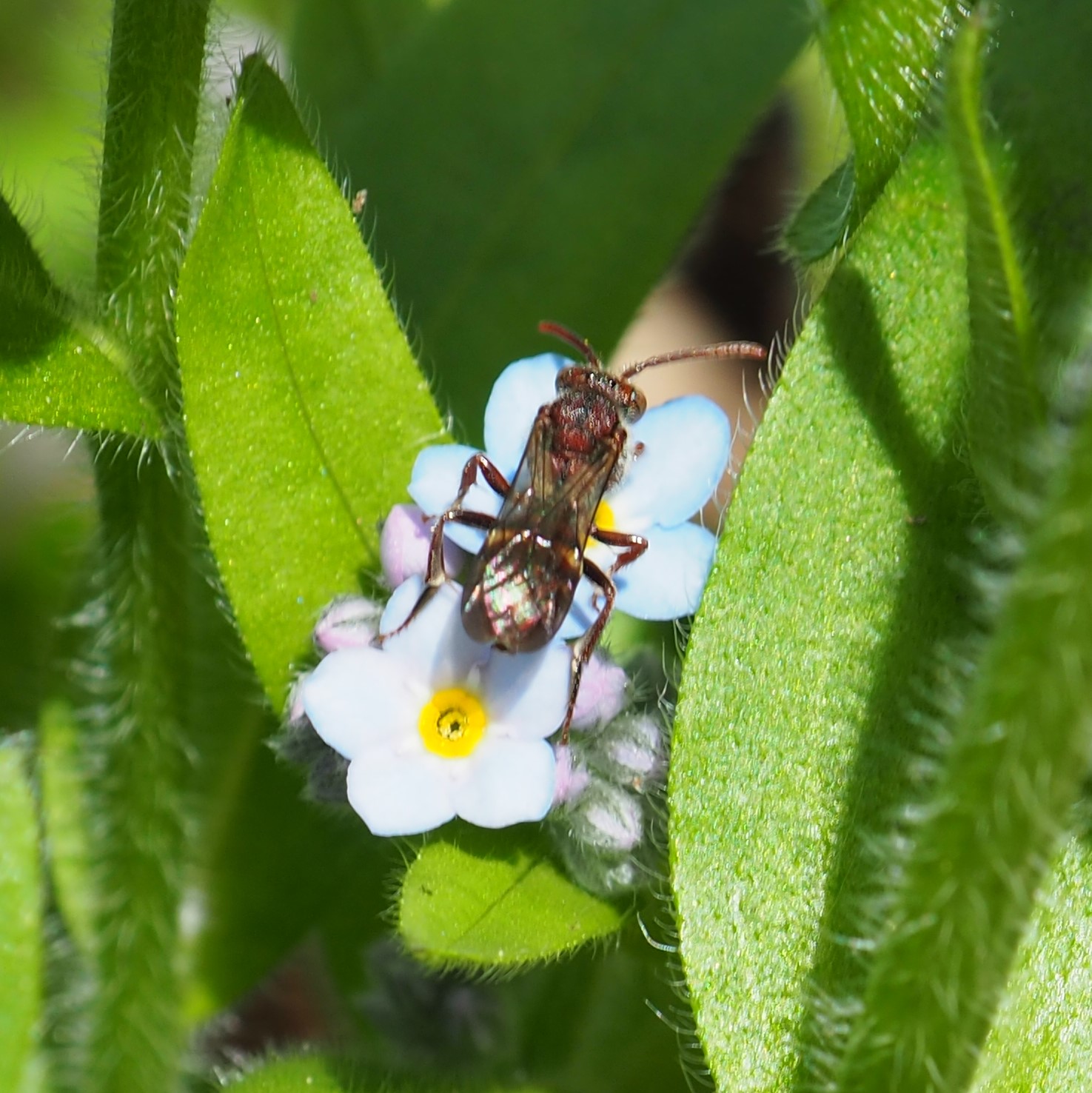
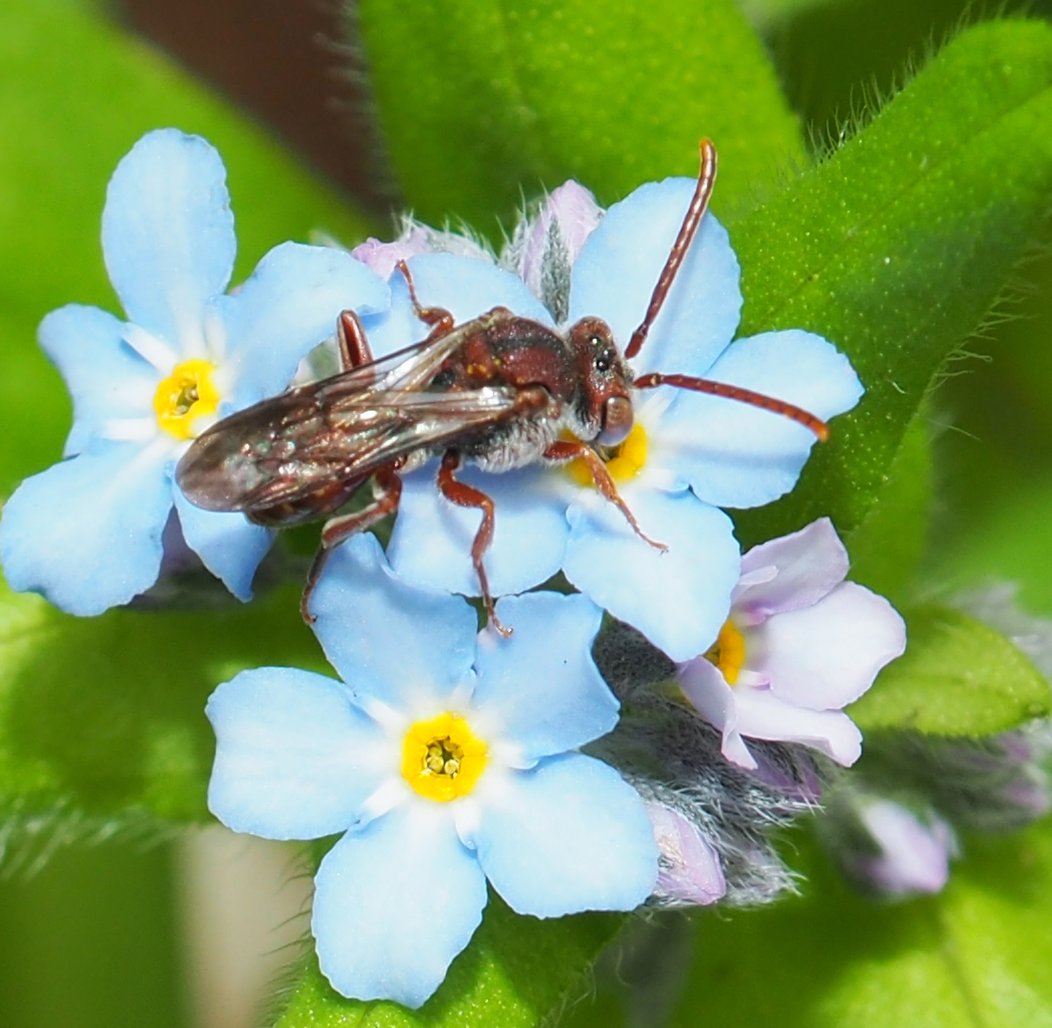
So to the Beetles: I don't know what most of these are, but probably will get some possible ID's today or so. Most or all are probably Flea Beetles: in fact the middle one was confirmed to be Flea. Third is Phyllotreta zimmermanni, a Flea Beetle that I posted on iNat on May 9, 2018. Isn't it interesting how many things tend to follow a date pattern?
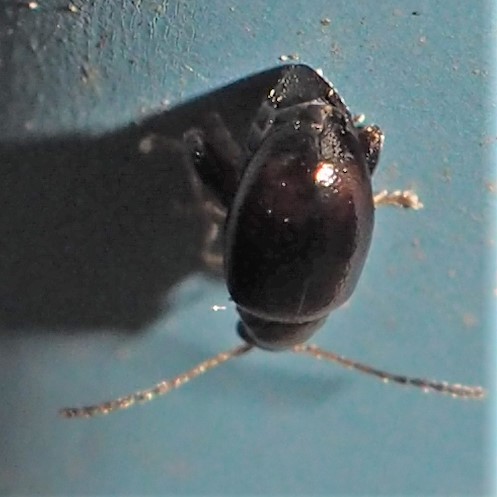
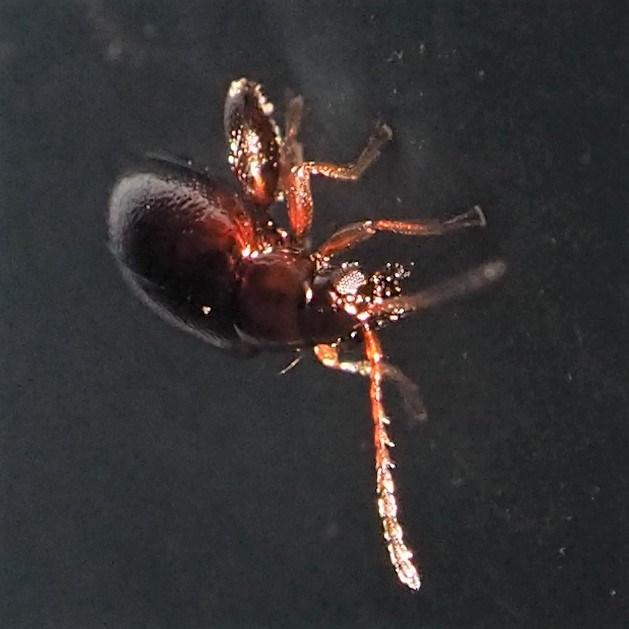
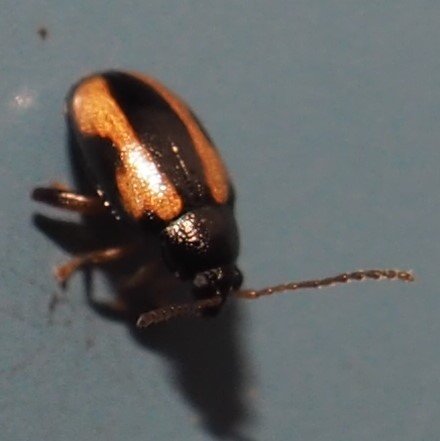
This first one is NOT a flea beetle. :-) Neither is the second one - it is another Rove Beetle. Third is a Weevil of genus Anthonomus.
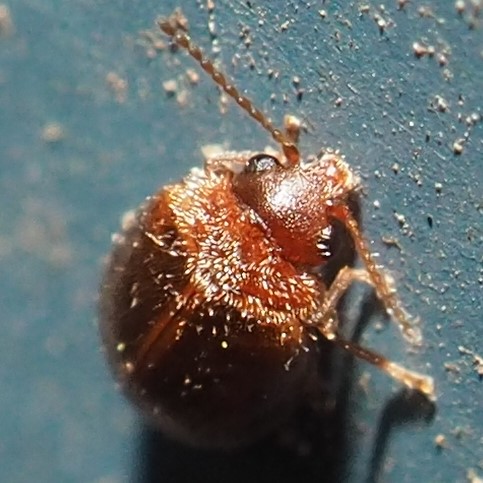
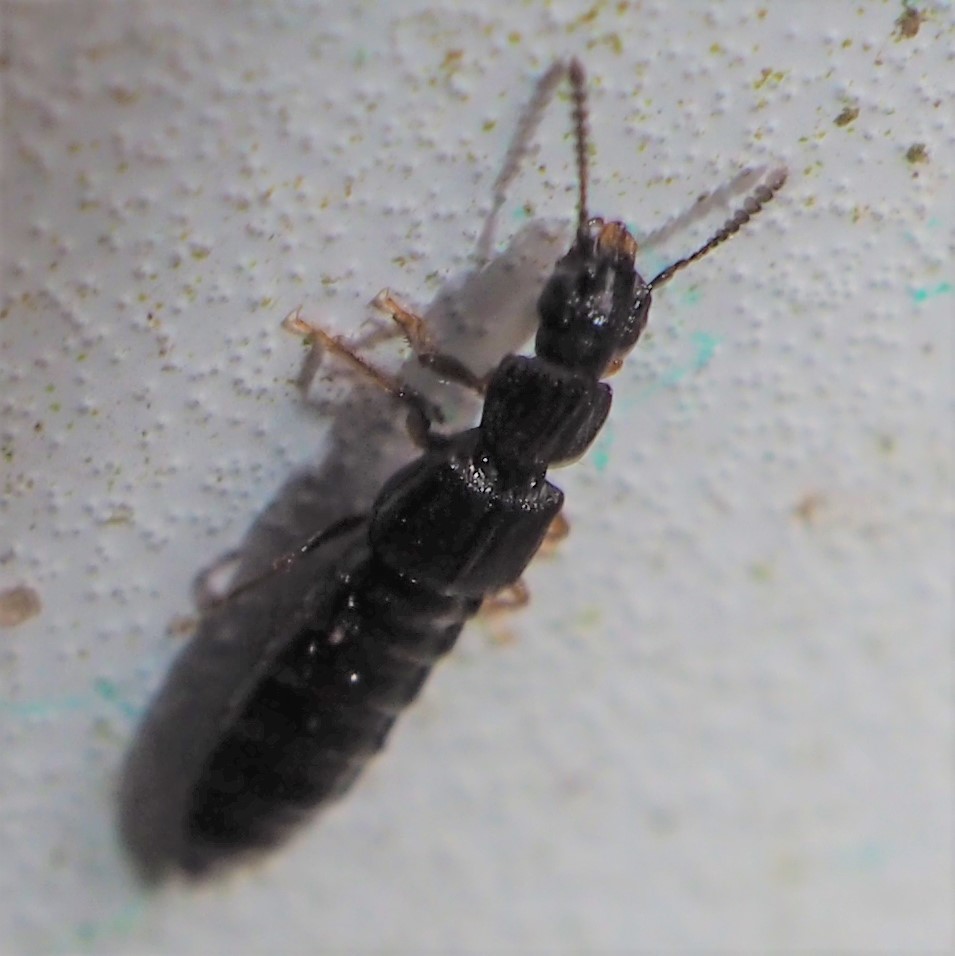
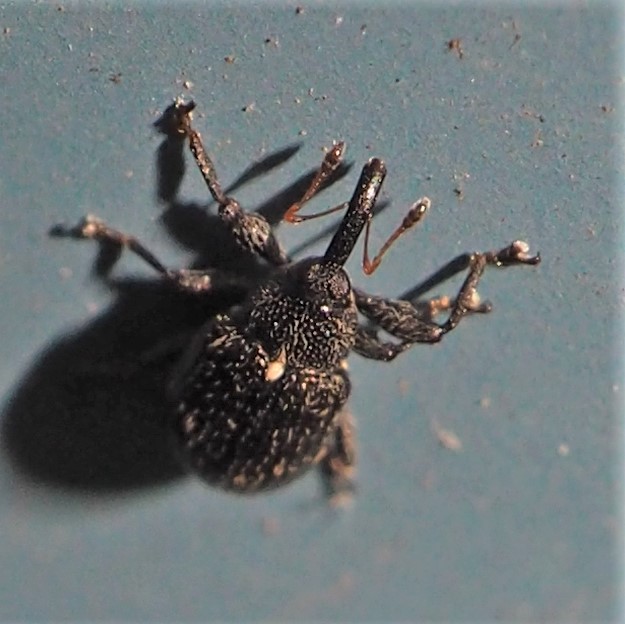
Here is also an Anthonomus found inside a Dame's Rocket plant. And the second, a Beetle that I mistook at first for the White-margined Burrowing Bug, but it's a Beetle.

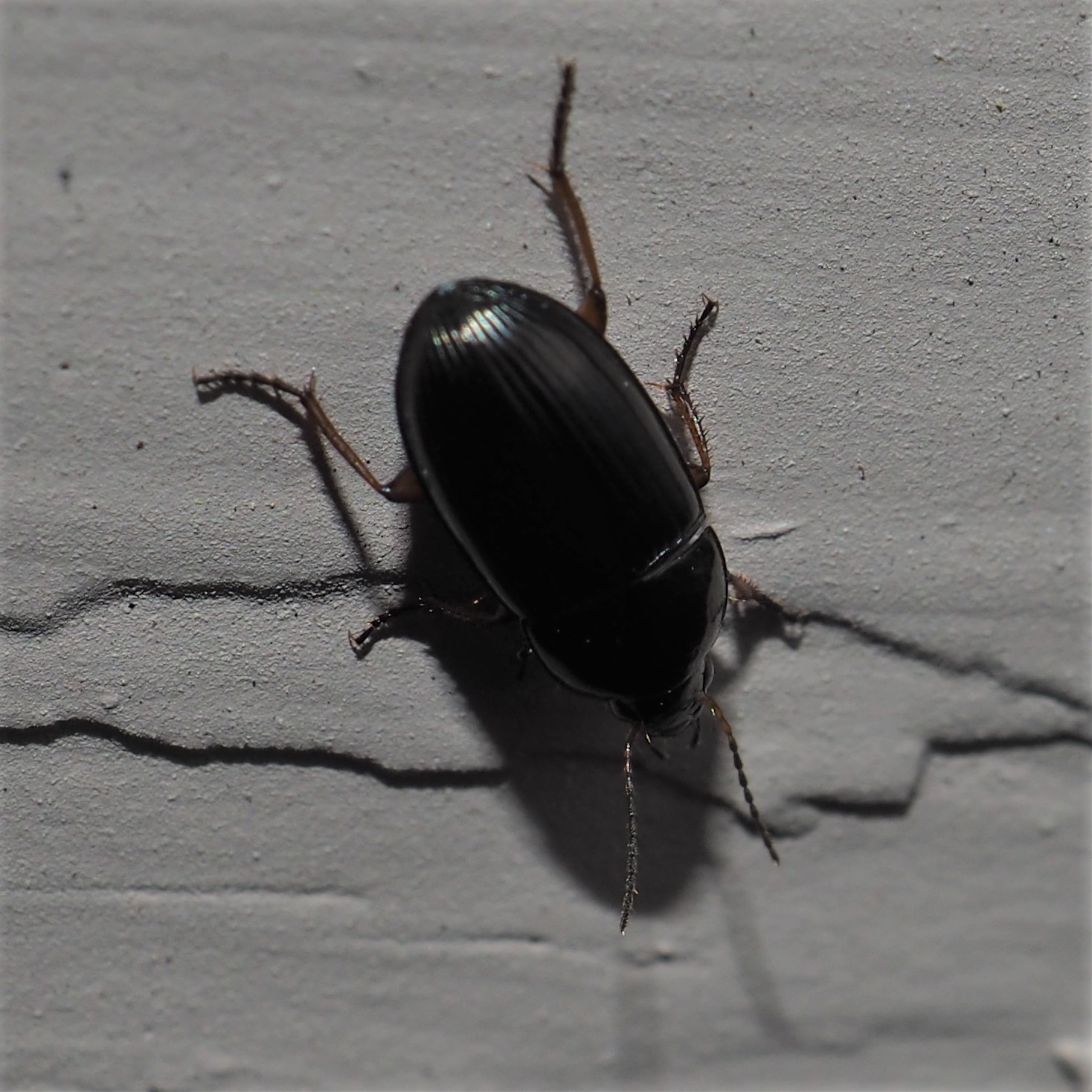
The Zelus luridus Assassin Bug. In Picture 2, it has spotted me and is hiding with its head between its legs. Picture 3 shows it beginning to come back up.
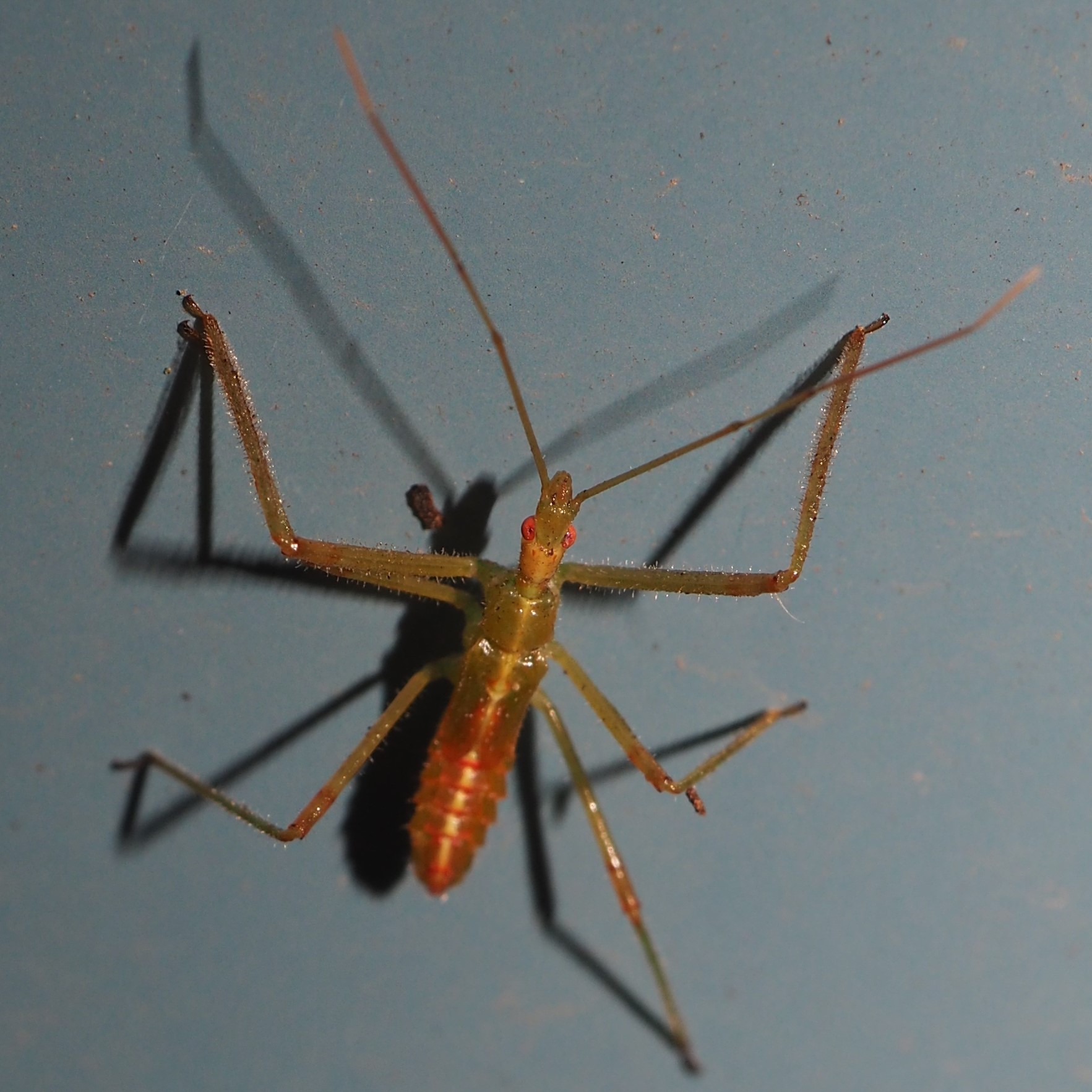


Our favorite leafhoppers are back. The first, Erasmoneura vulnerata, is unusually fond of our shop wall. The second is one of the incarnations of the Eratoneura genus.
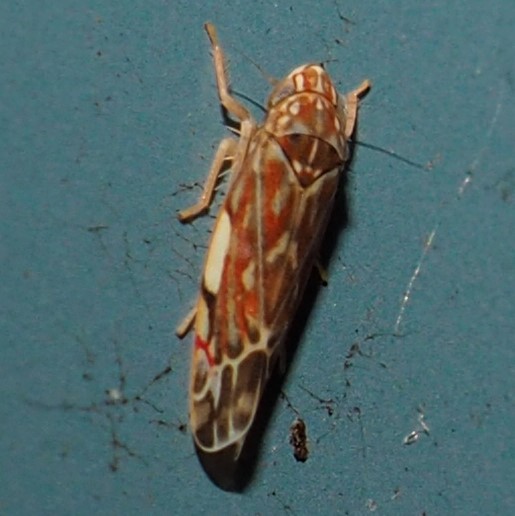

The flies are back with us. This is one of the first Crane Flies I've seen in a while. I love its bright orange abdomen. It has lots of bits of color and pattern. The next two are Fungus Gnats.
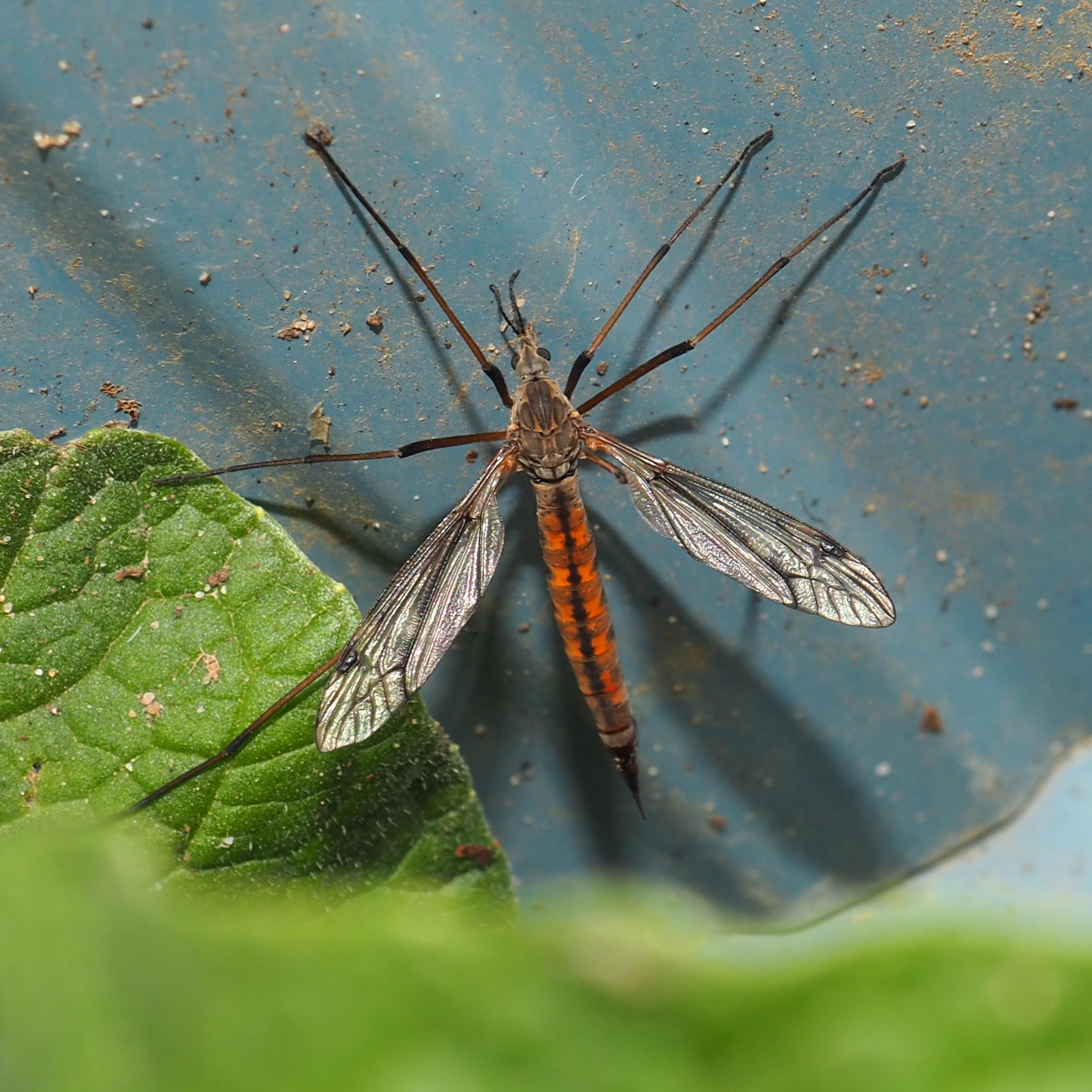

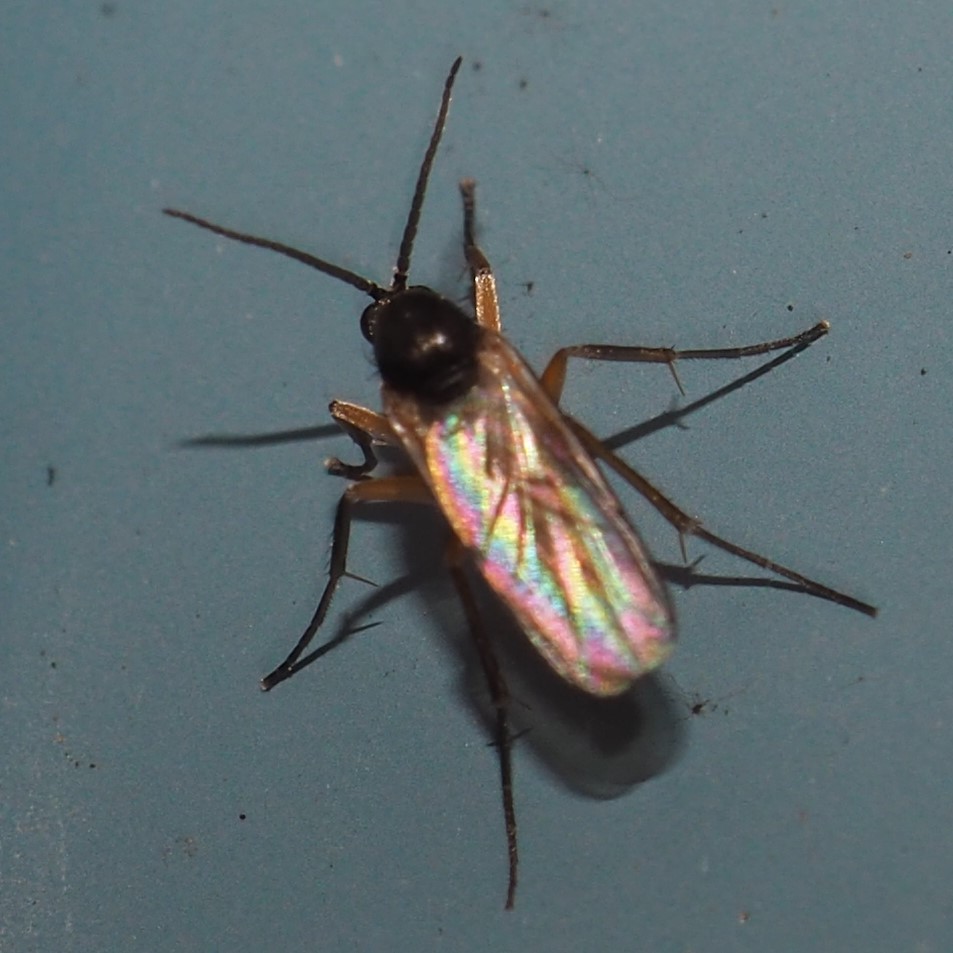
Here is one of the many Gall Midges we saw this week. There were also scads of midges. Here are a couple. Did anyone say to him/herself, that midge looks just like that gall midge. Just compare their antennae.

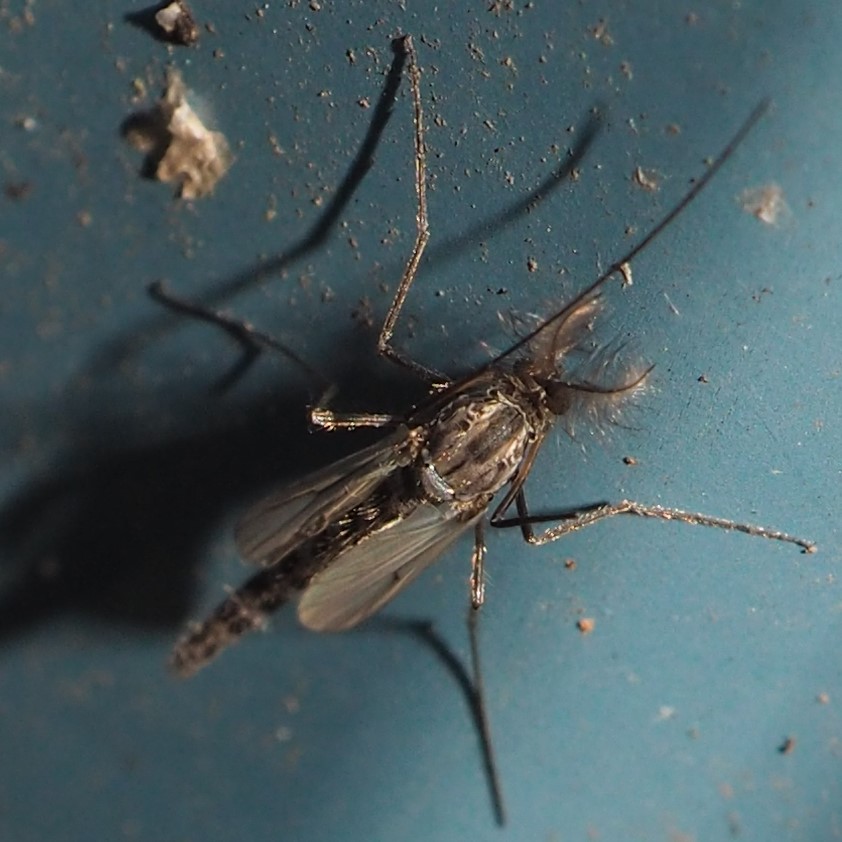
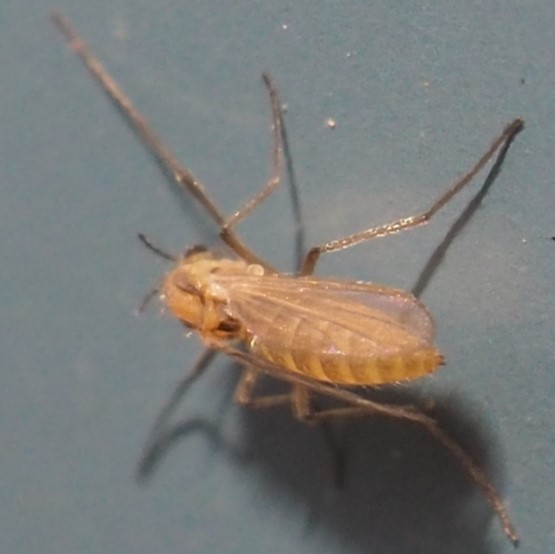
This fly with the bright red eyes is so common these days! I don't know the little third one, but love that iridescence! The fourth one is also unknown, but looks ready for anything.

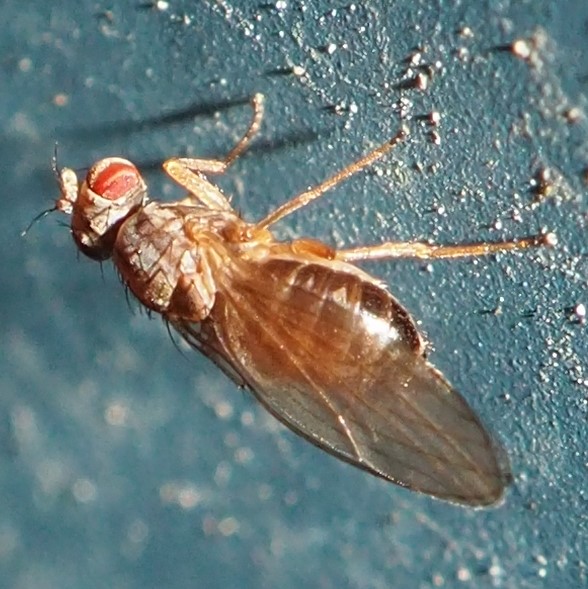
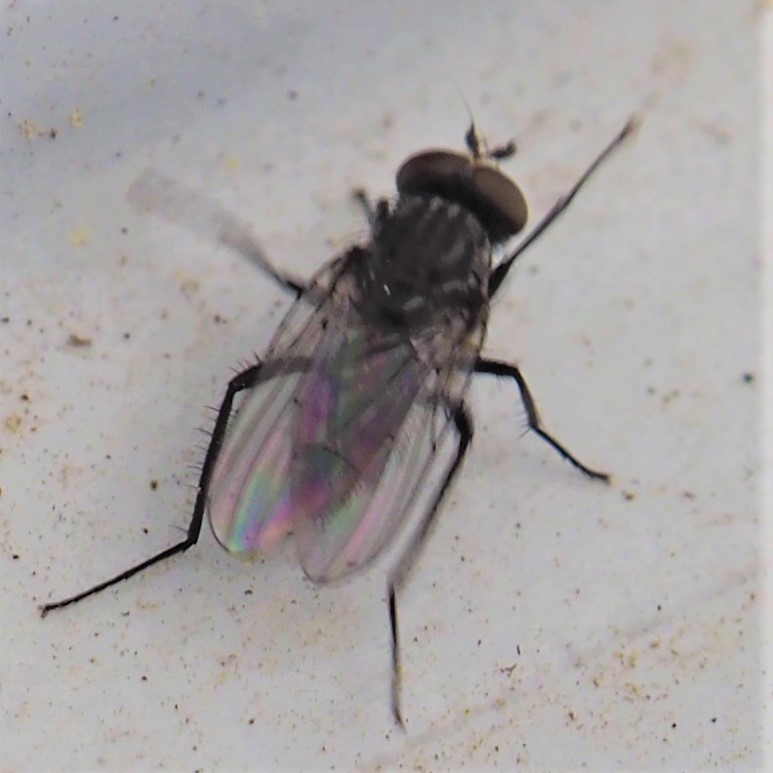

A quick sniff of the flowers. The Forget-Me-Nots are just getting going. They are so good at spreading but they are so pretty in season. If anyone needs some starters, let me know. The blue and white Violets are doing well, mostly in my neighbors' yard. And the Primroses are really opening up after such a long wait.
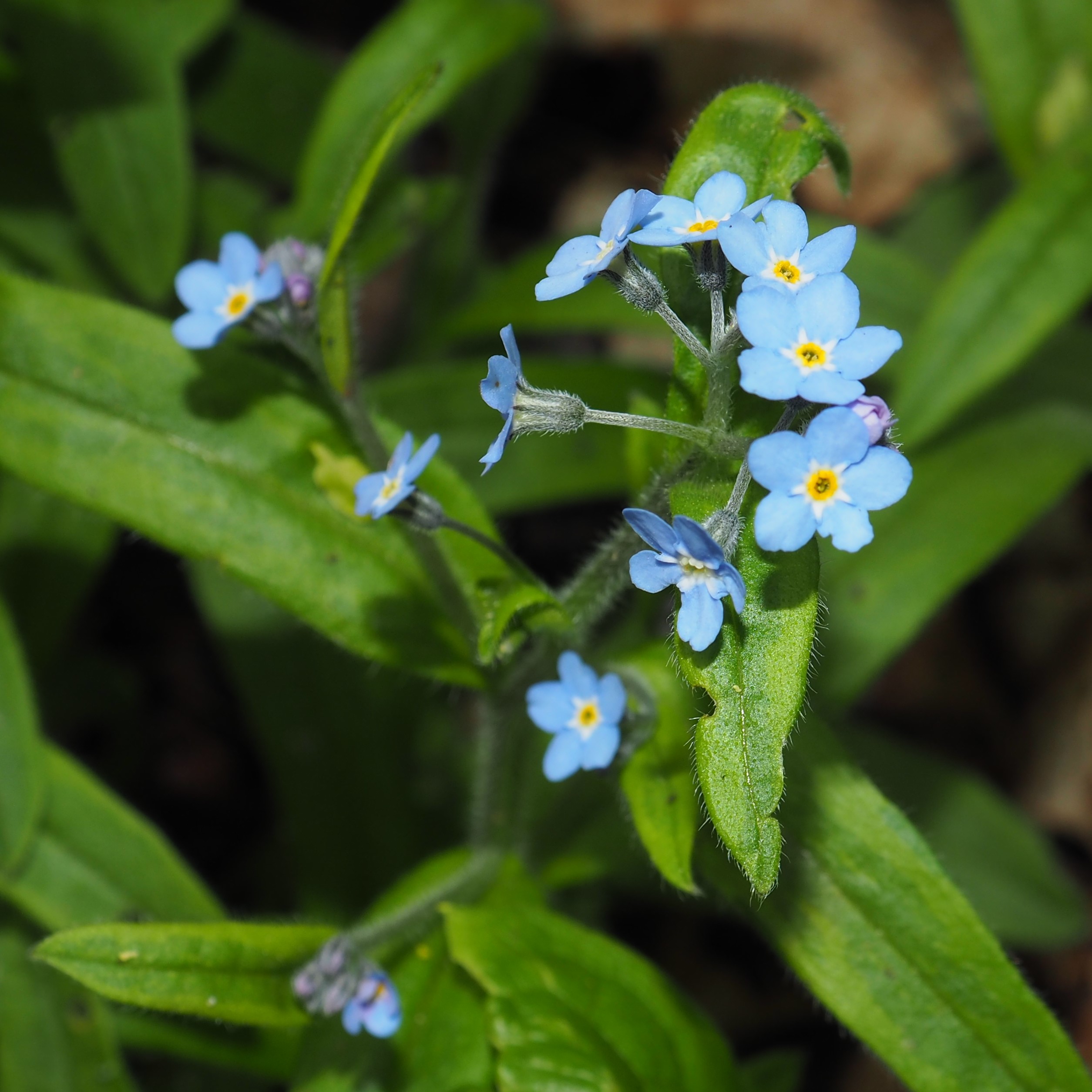
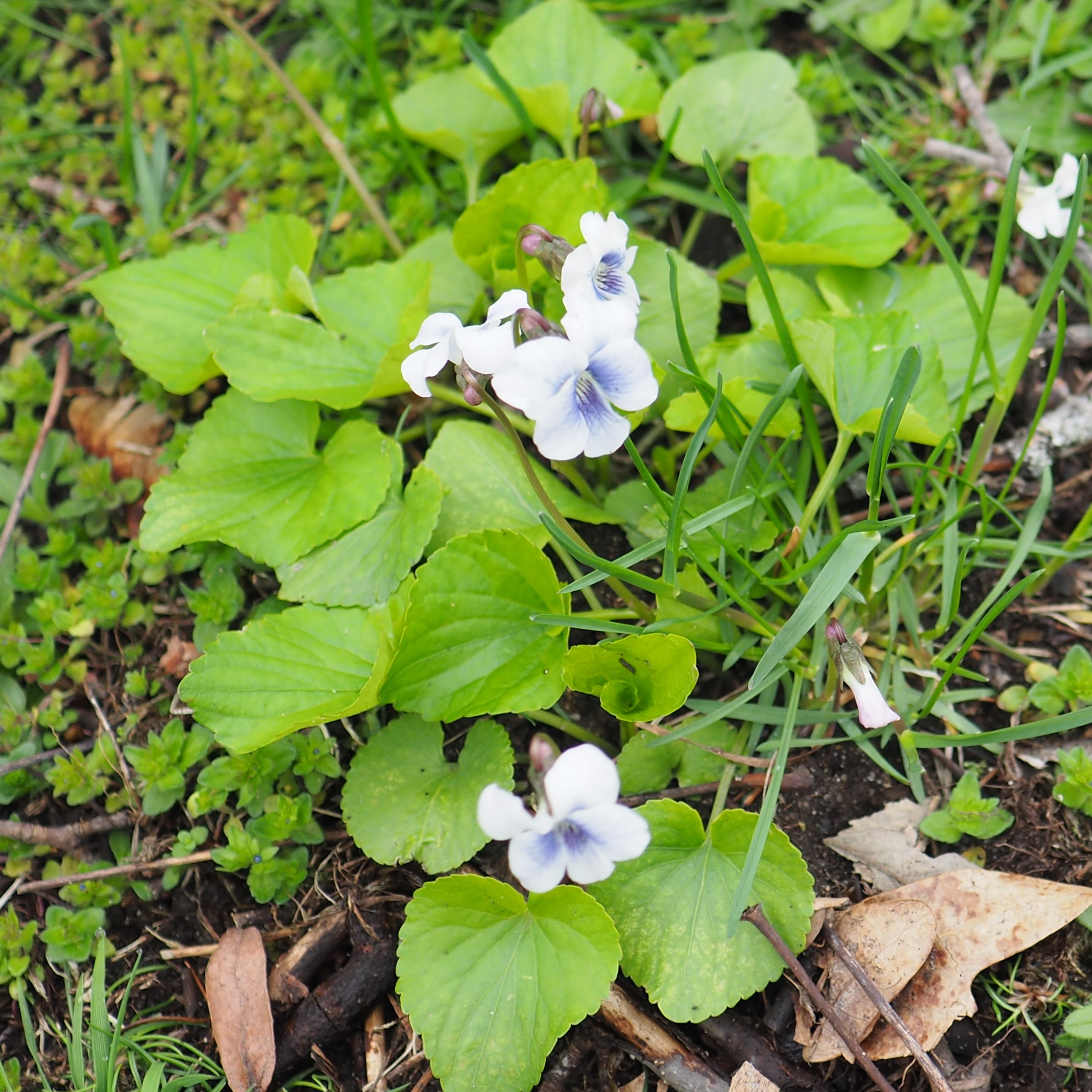
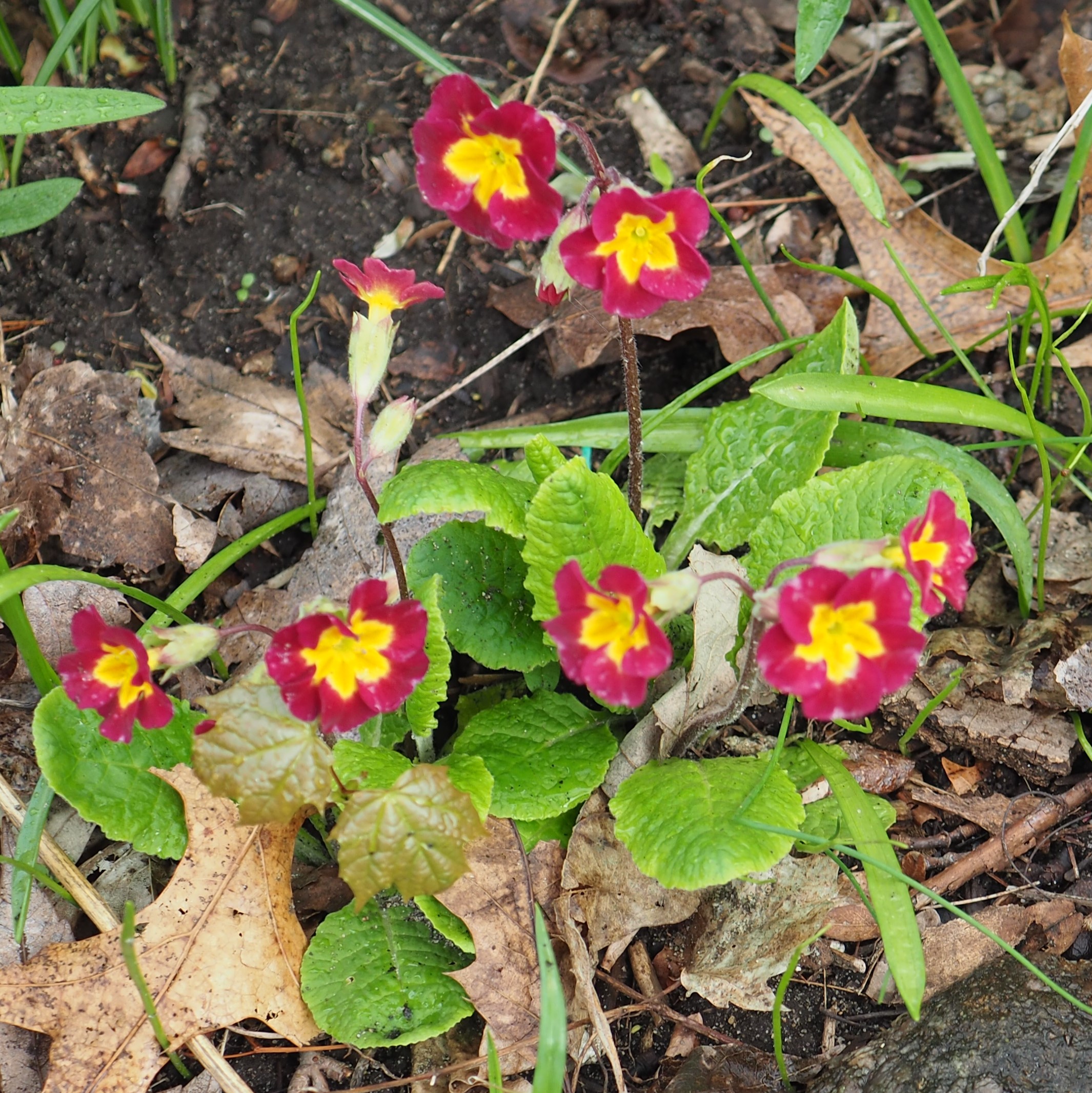
Surprise! A few days ago was warmer and even a bit humid. About 4 or 5 in the afternoon I was shocked to see a little toad sitting in the shallow end of the pond. He must have thought it was time to start up the Toad Orgy. But he wasn't singing, and no females or even other males showed up. What Party Poopers! By the next day, he had disappeared, probably back into the weeds. I think he will be back soon. This is just about when the Love Fest usually happens (every year since about 2013). Actually, in 2017 it was on April 20. Now to continue with the surprises, while Toadsy was waiting for action at the south end of the pond, Froggy (who had been back in hiding since his last appearance) was suddenly sitting at the north end. Usually the shenanigans make Froggy nervous enough to disappear again, and sure enough, he became invisible again that evening. But the next day when I was in the driveway, I saw a familiar sight squeezed into the brickwork in the porch. Yes, it is one of the Grey Tree Frogs. Just where one was sitting last year!
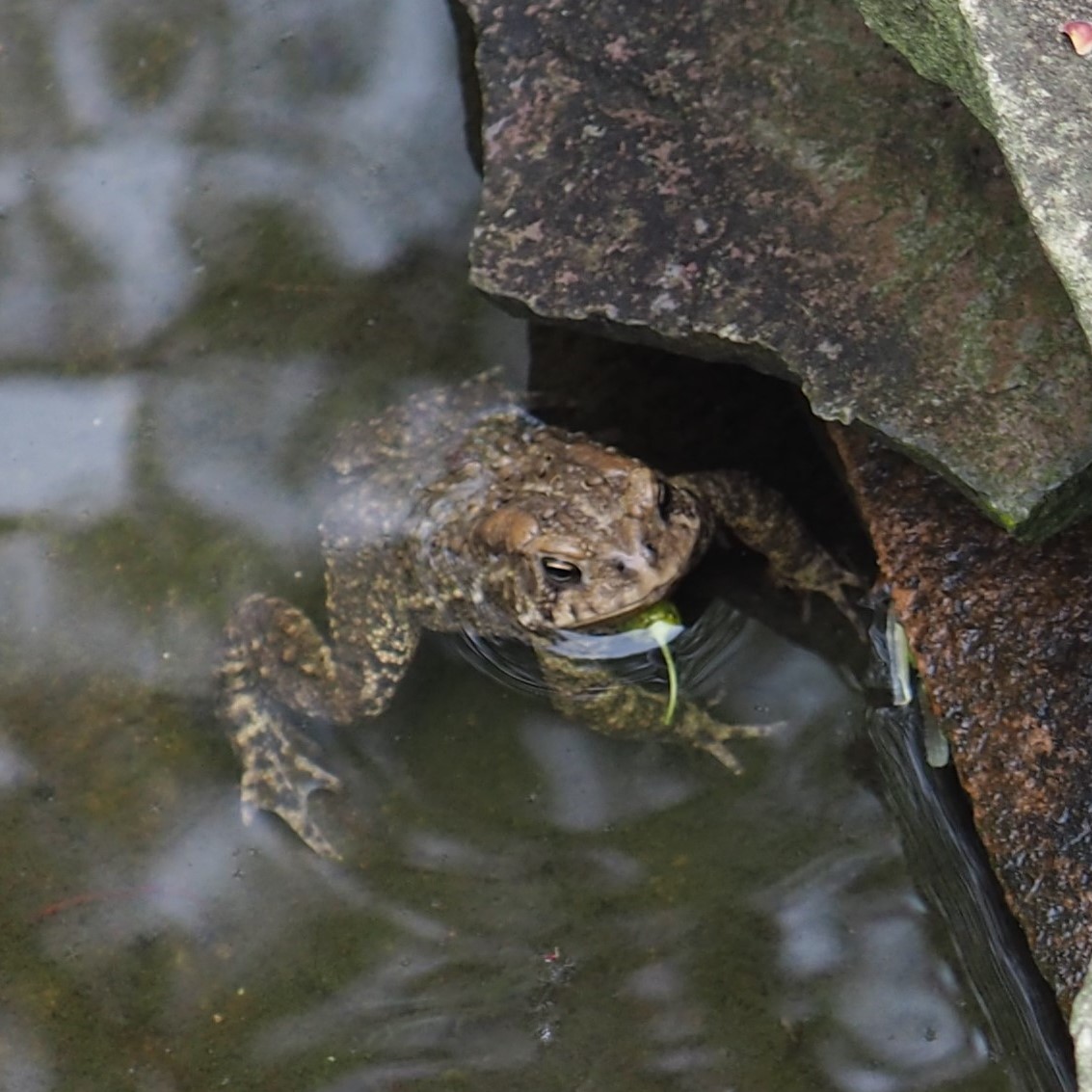
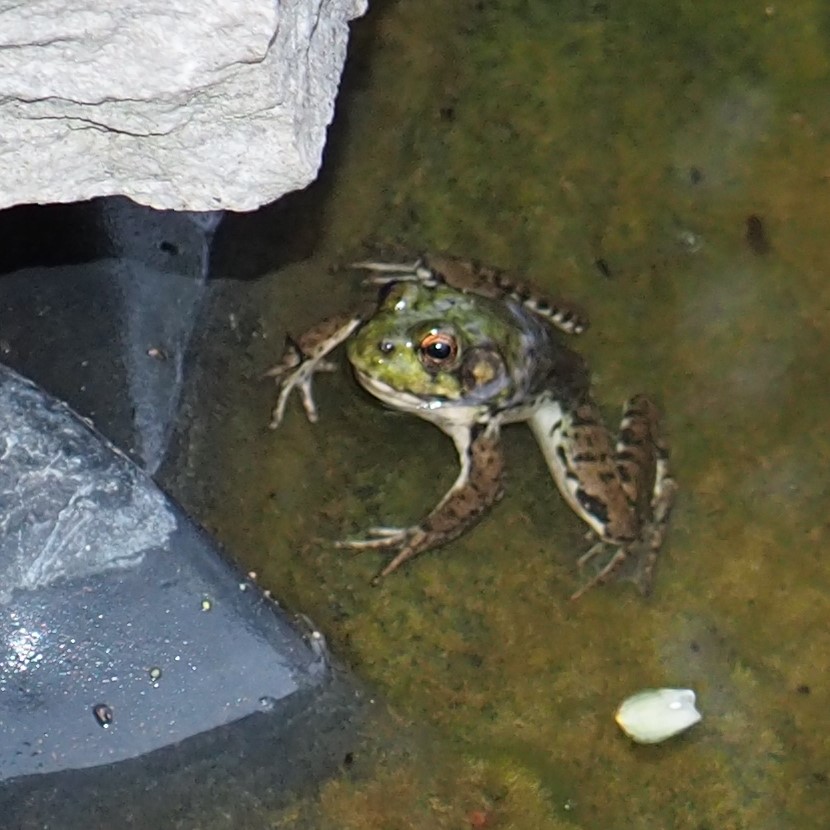
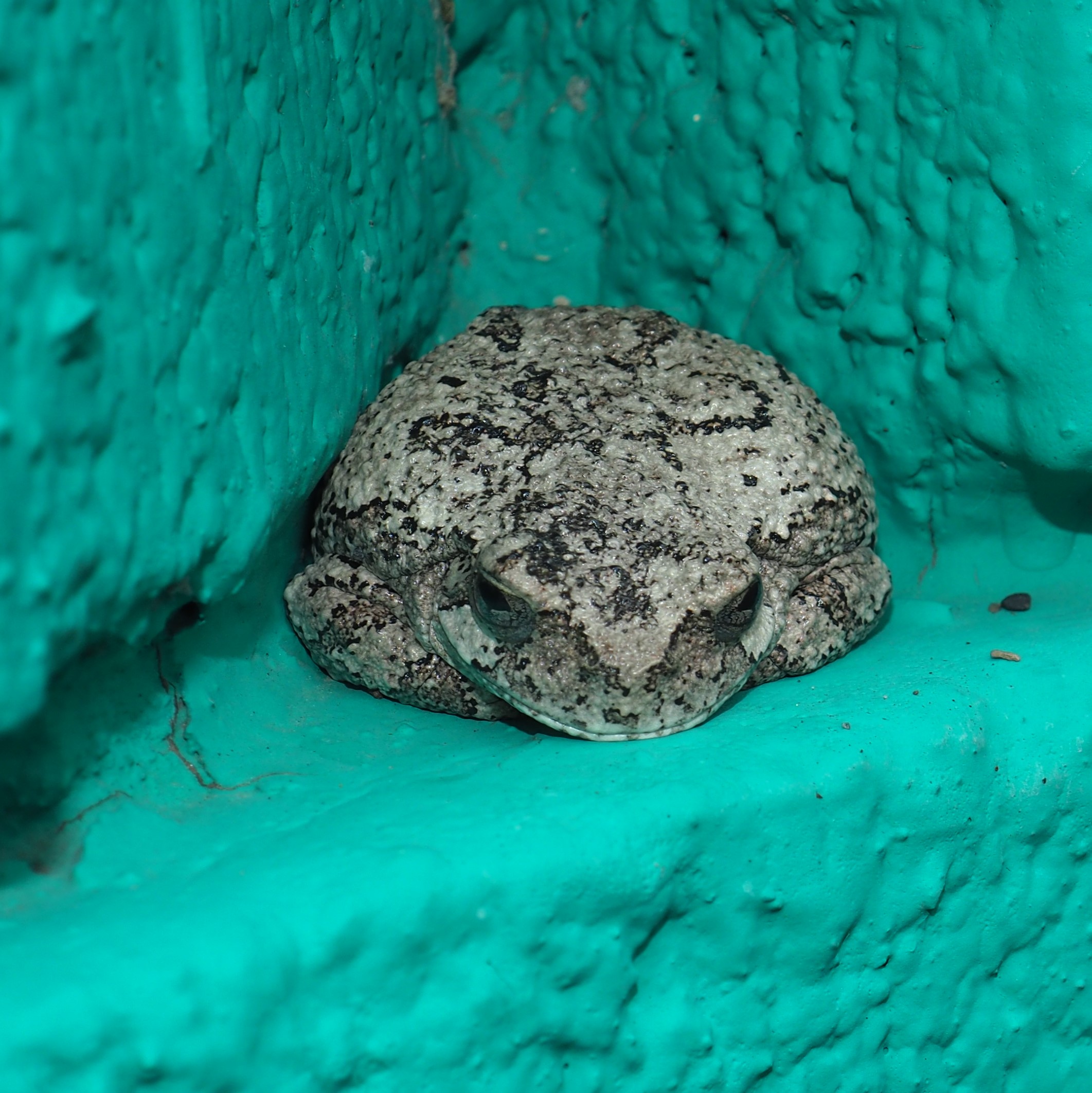
A few more critters: A Brown Lacewing; one of those Bristle Millipedes of genus Polyxenus; and one of our Pillbugs (They have waited a while before coming out for the Spring).
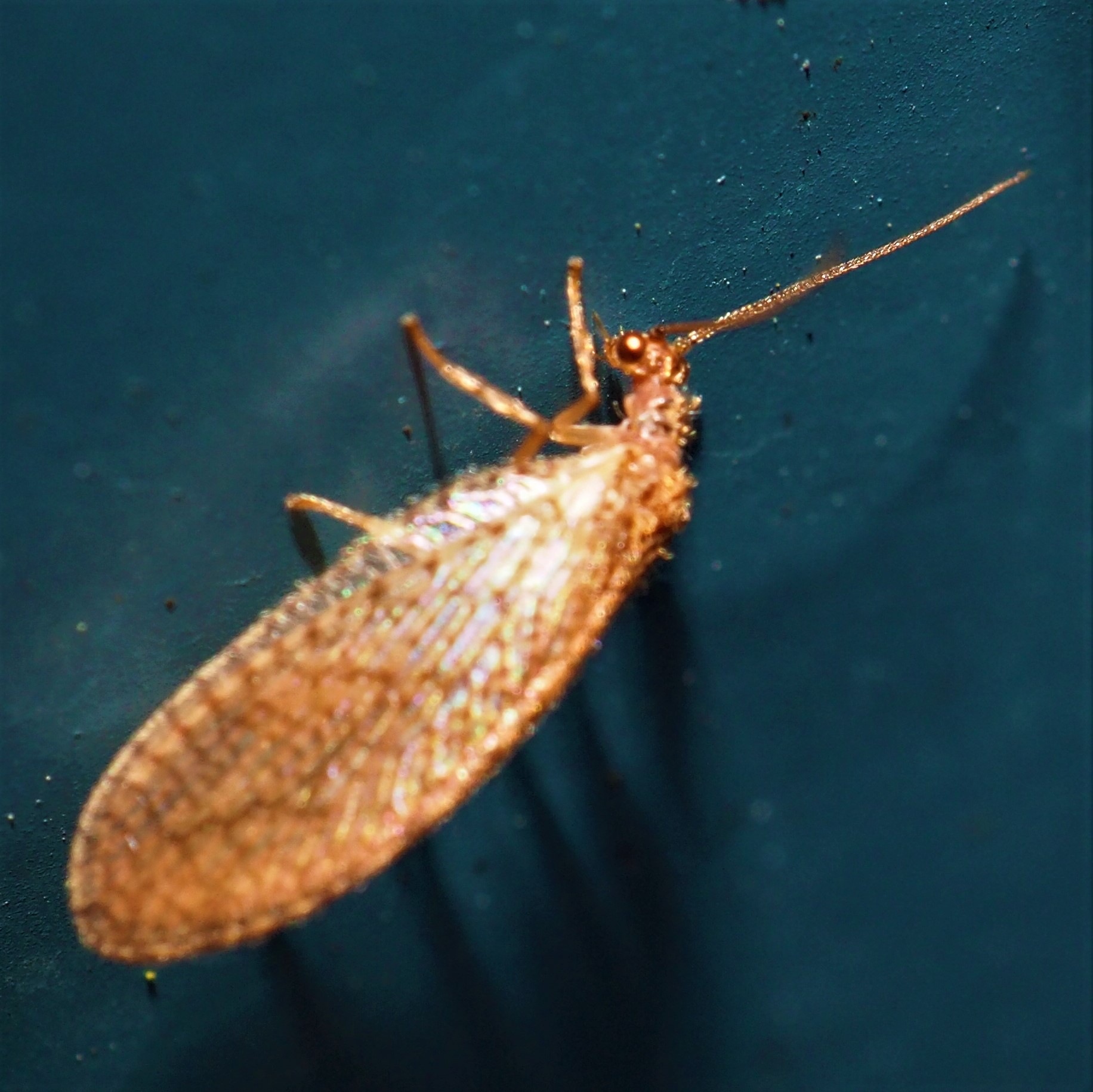
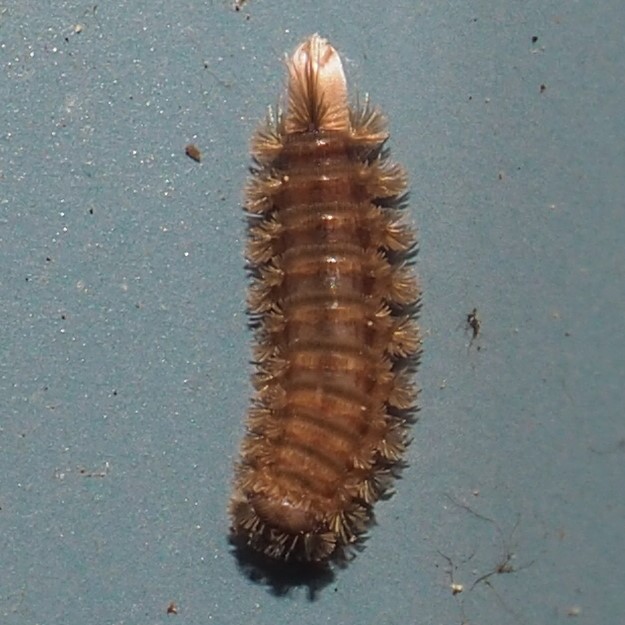

I think I forgot to post this picture from last week. It's the view as I look northward up our street. Each of the Maples' buds is a different color. I love how they blend like a tree rainbow! The next two pictures show the Redbud tree as it progresses from April 29th to May 2nd - 3 days apart. The petals get bigger and pinker and the grass greener. It really is happening that fast!


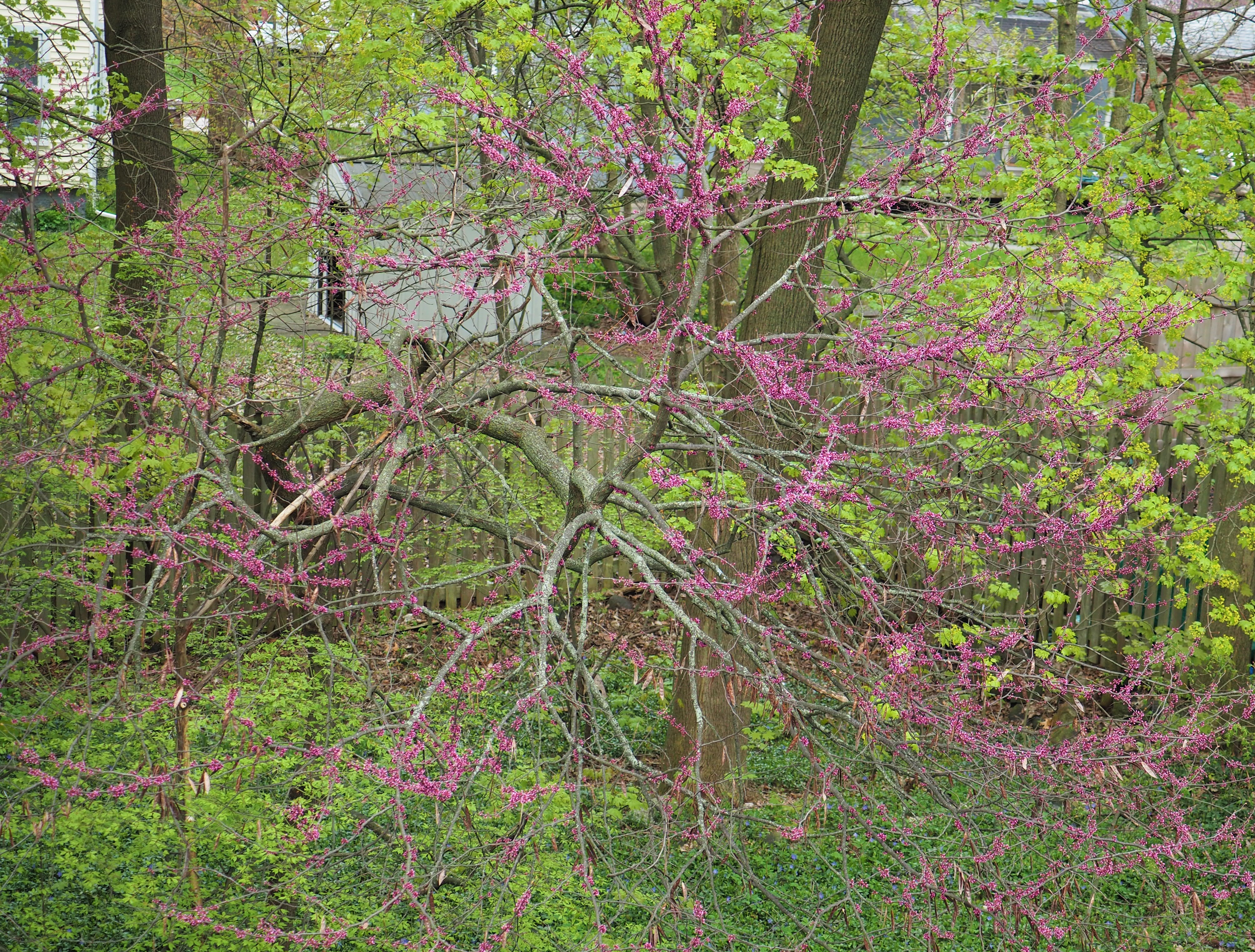
Mother Robin worried me a few times. Up to now, she had sat on the nest pretty regularly, but yesterday she was missing when I came home. I figured whoever had robbed her nest last year had done the same this time. But then a couple of hours later as I was going in again, I saw this amazing sight (Picture 2): she had brought back a meal for babies. I think I snapped this picture when she had already fed part of it to the babes. Then for some time, here she was sitting on the babies (Picture 3)(and perhaps some unopened eggs too). It's still too cool to abandon them for long! You go girl! Note: some of the pictures were taken a day off but please ignore that for the sake of story continuity.

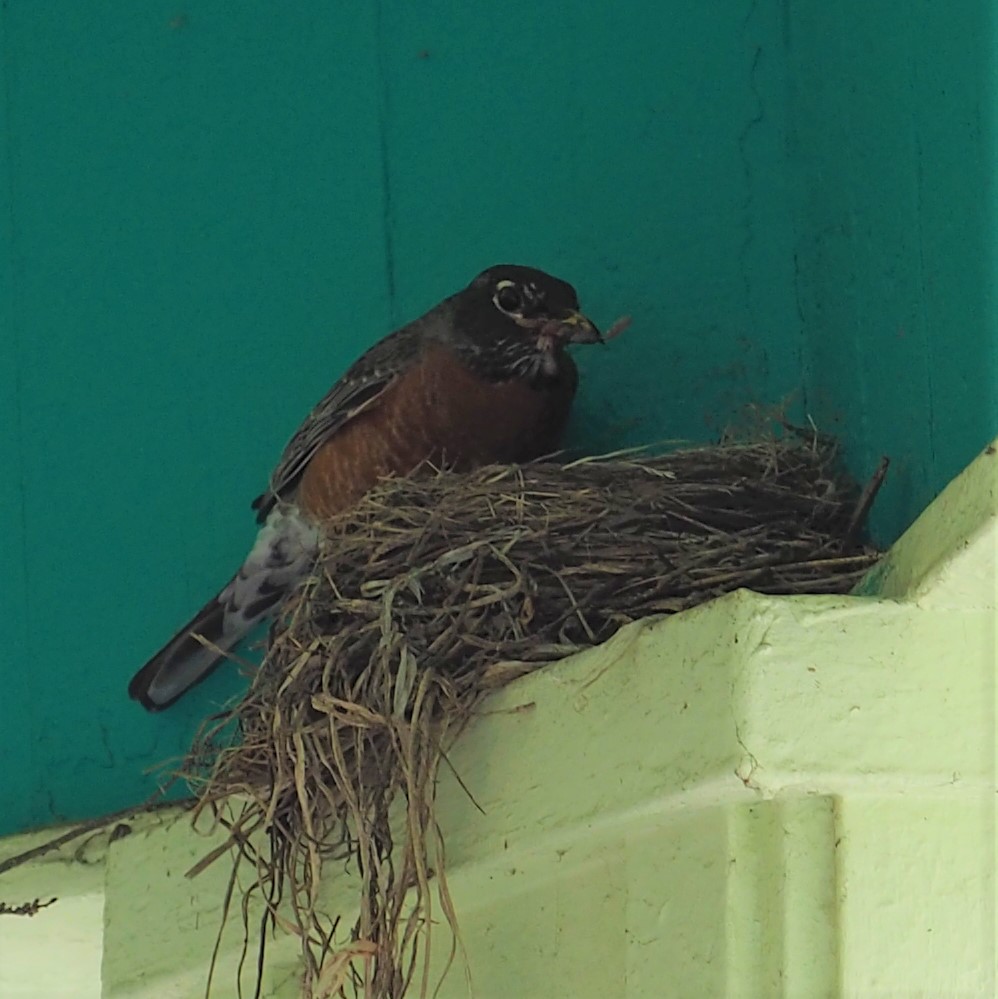

Spider time! First and second are Common House Spiders. Then a Calico-cat colored one, which may turn out to be another Common House Spider, but with such unique coloring!
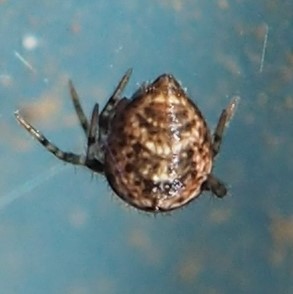
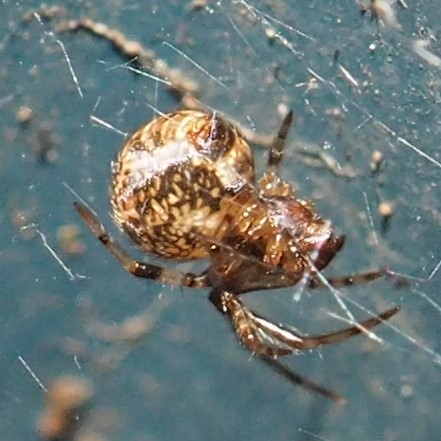
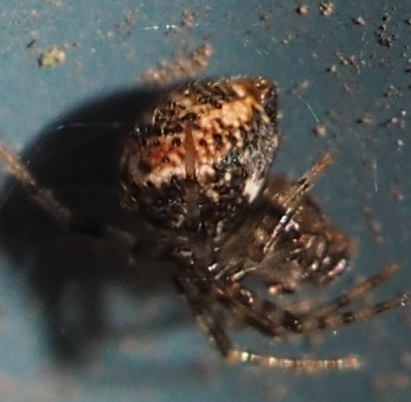
Remember the mystery Cobwebber? (I chose Cobweb because it looks so much like the Common House Spider and it's a Cobwebber of genus Parasteatoda.) The second picture is our spider last week, and third is the lightest one from this week.
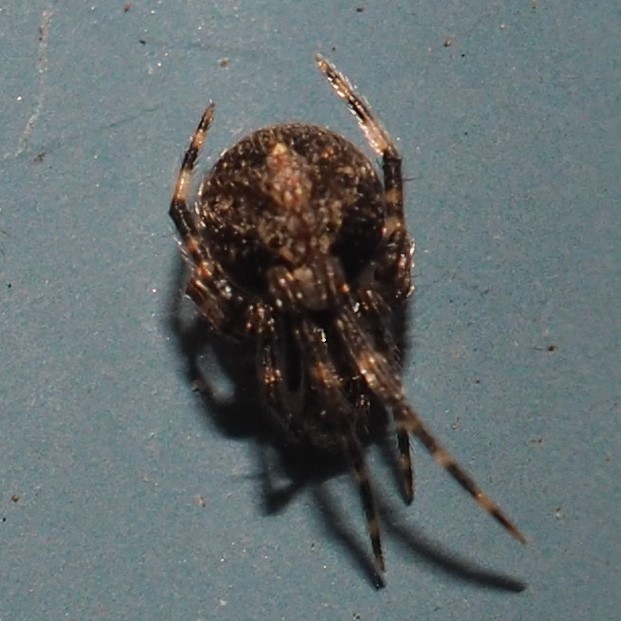
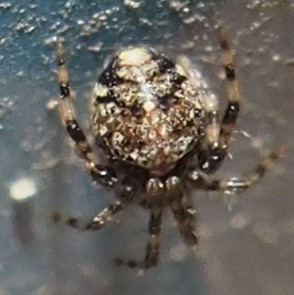
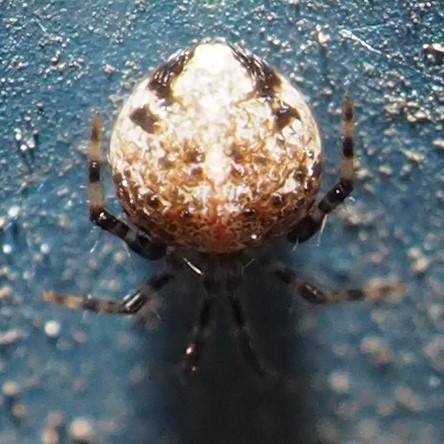
Here's that red and orange Sheetweb/Dwarf Spider (genus Linyphiidae) again, a female - this one is from last week. I wanted to rerun her to compare the one we saw this week - a male. It is definitely a male - look at those huge black pedipalps. The black lump on the head is the eyes - I had to humbly ask about them! Matt (@claggy) still holds fast that neither of these pictures fits with the pictures in Bugguide.net. And I am moving that way. What a beautiful spider. I'd love to be able to say that I had managed to get enough informtion into my photos so that someone could identify this little creature. (It is very small.)
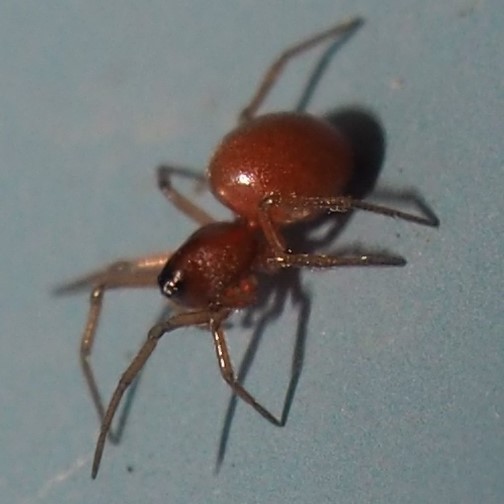

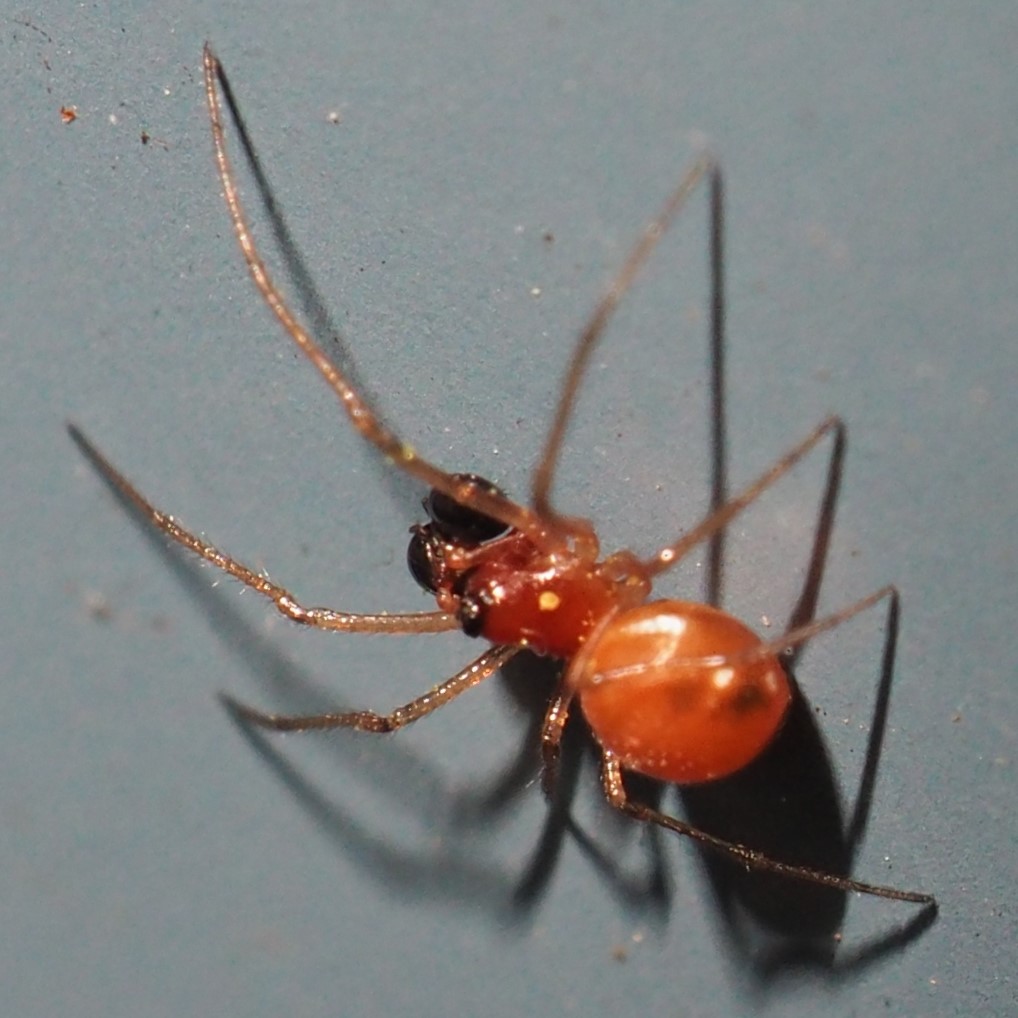
This first spider is Mangora placida (Tuft-Legged Orbweaver). We saw it a month or so back in a more juvenile form. It would be nice to create a sequence of photos showing this spider as it progressed from form to form as it matured, much like what we've been doing for Leucauge venusta (the Orchard Orbweaver, Picture 3).
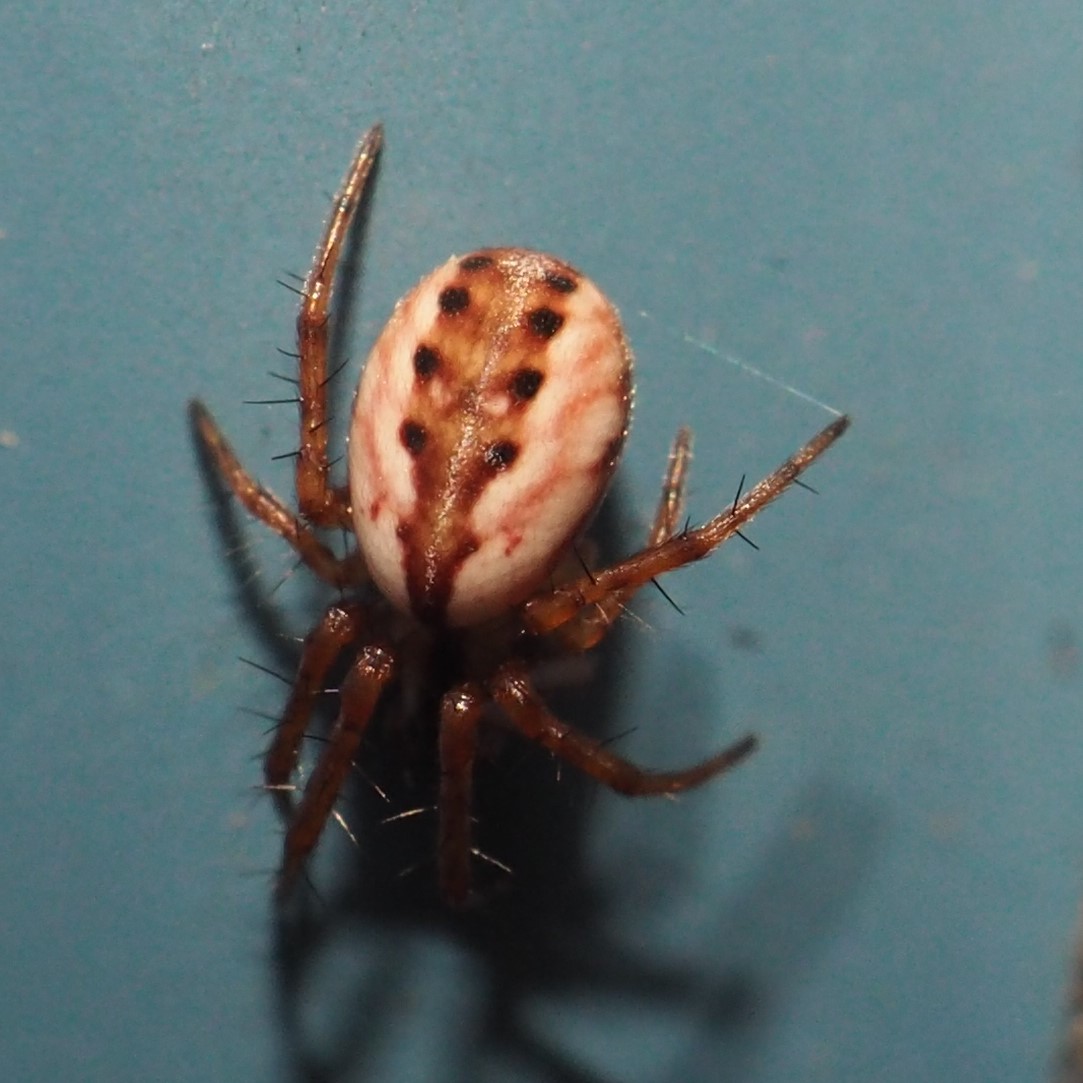
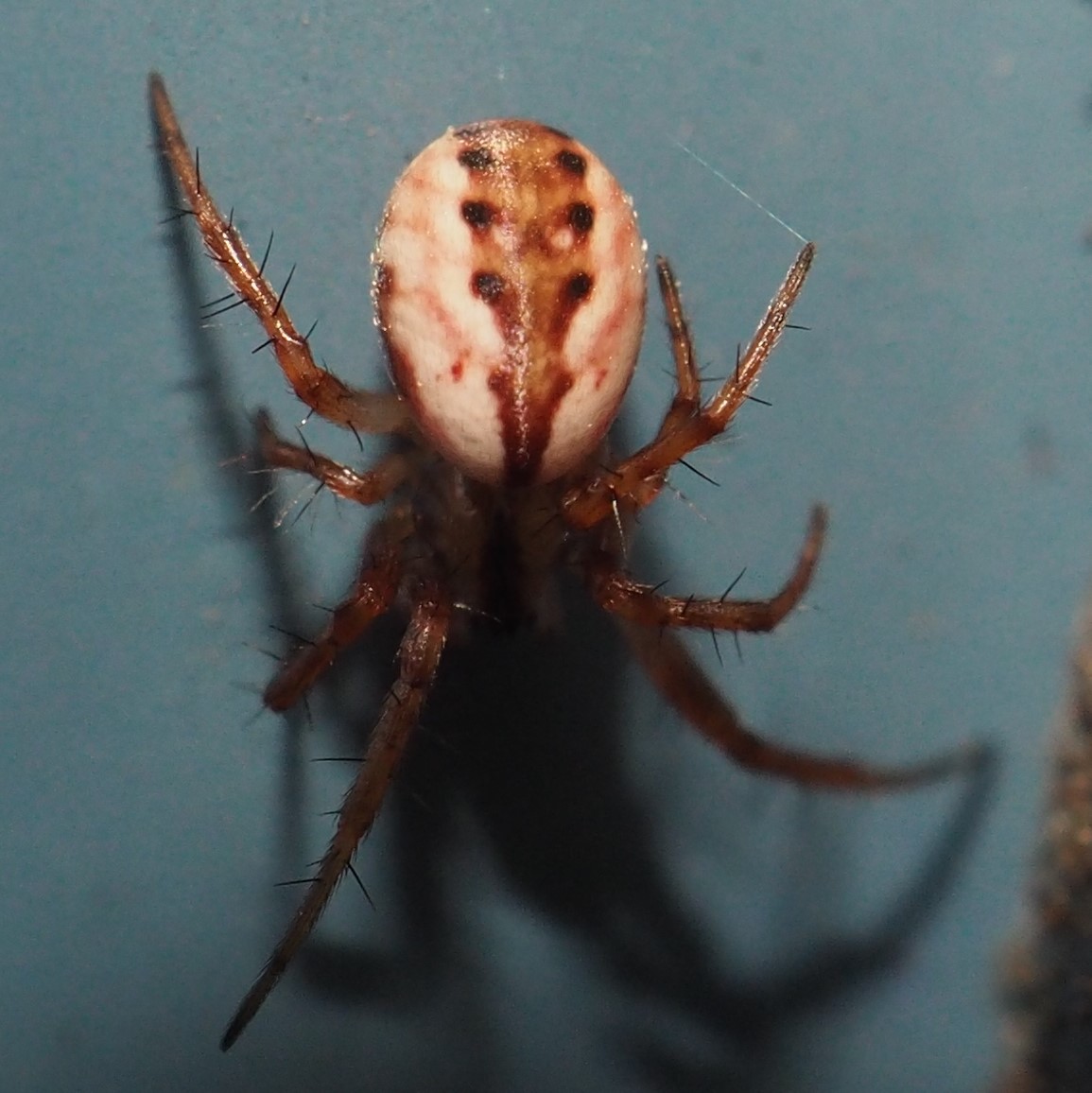
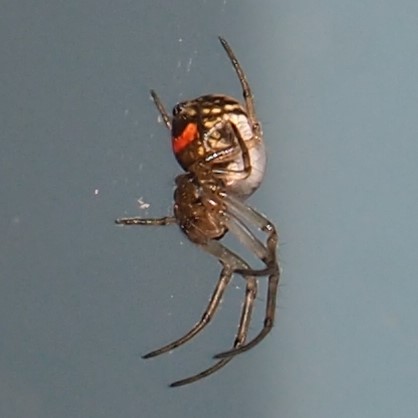
The little Dwarf Spiders have been much in evidence. You can see from their abdomens the patterns that would give away the species if more complete records were available. This one is of genus Grammonota.
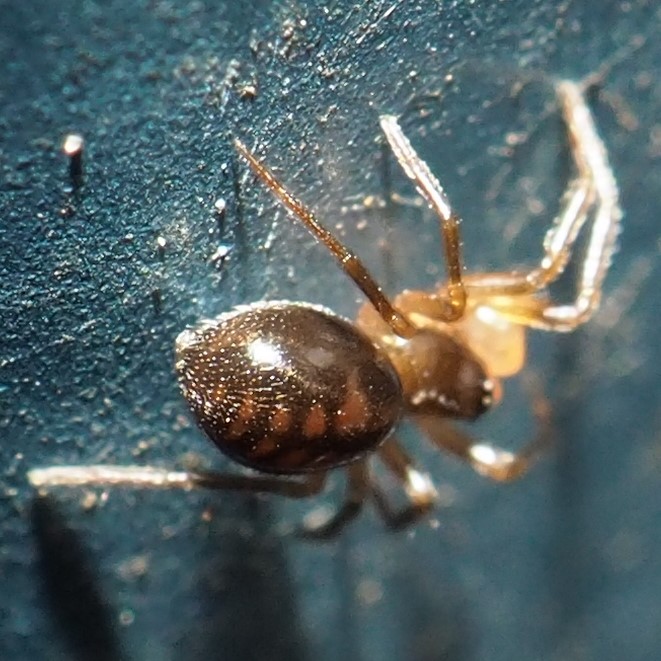
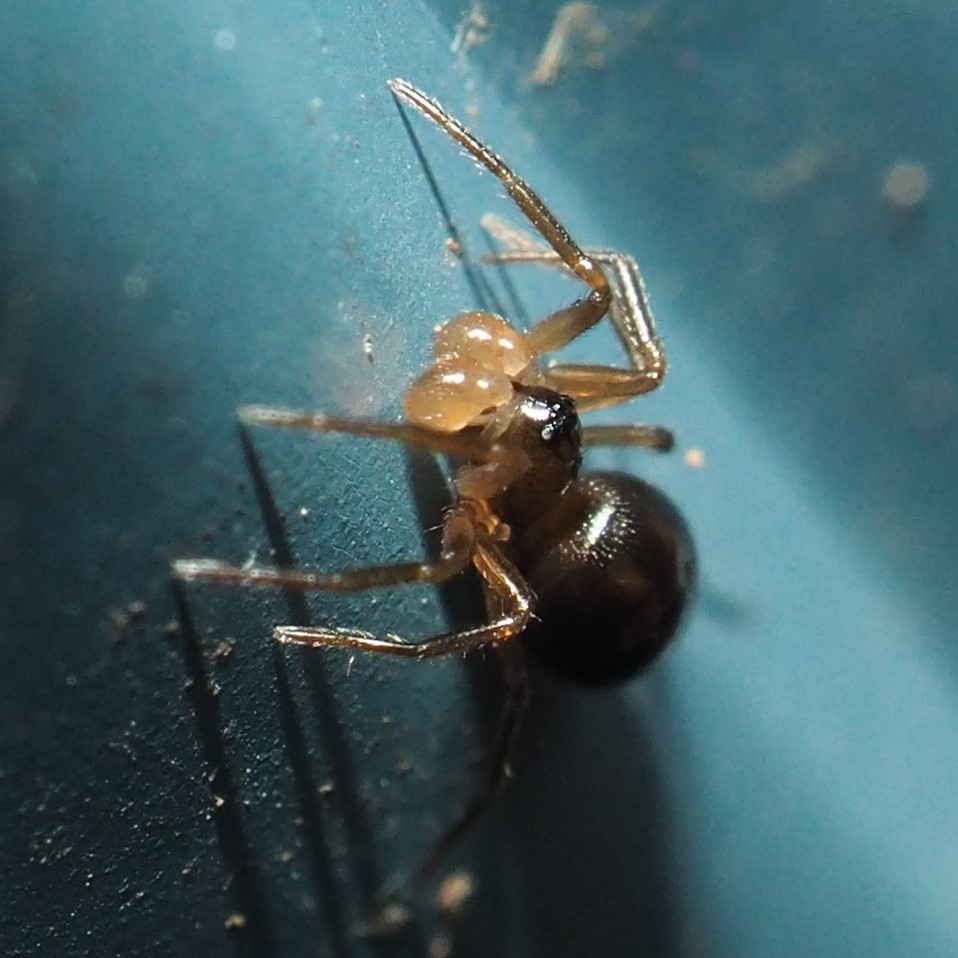
Where are these Wolf Spiders coming from? This week I found (I believe) two different ones. This is one of them.
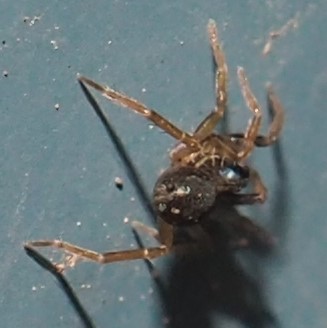
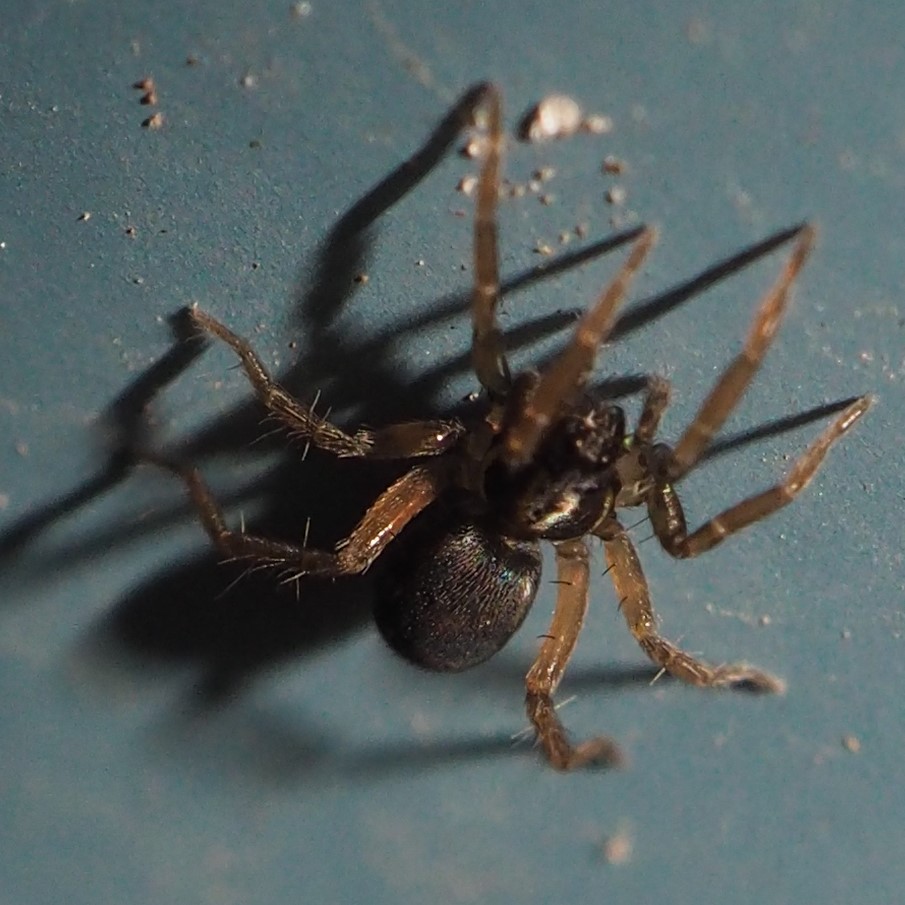
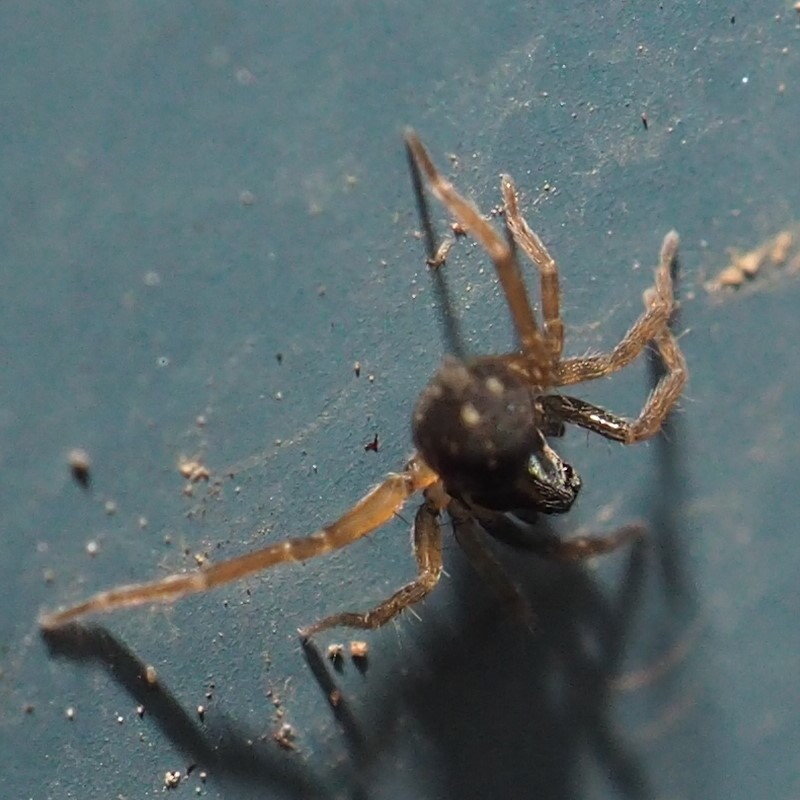
Here is the other.
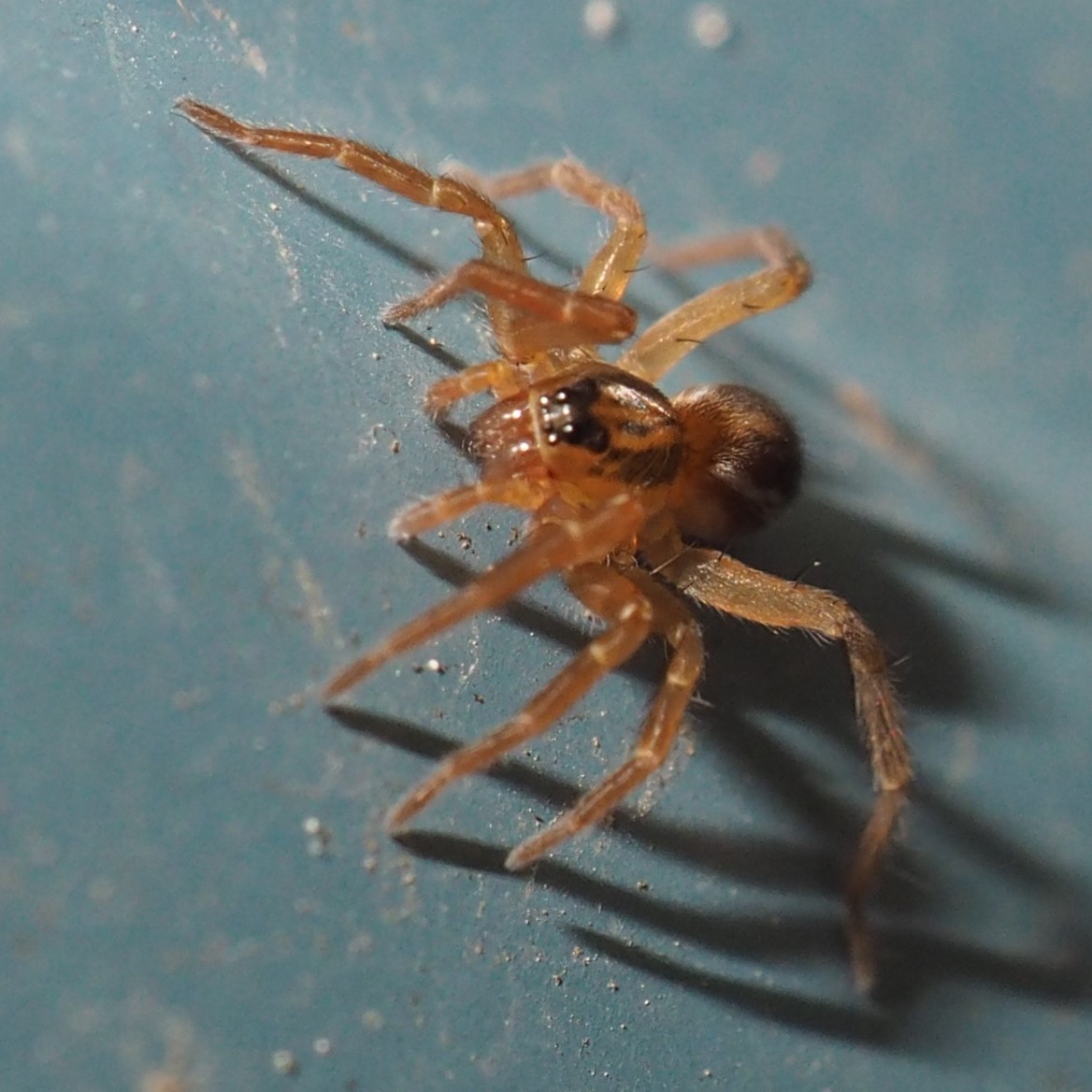
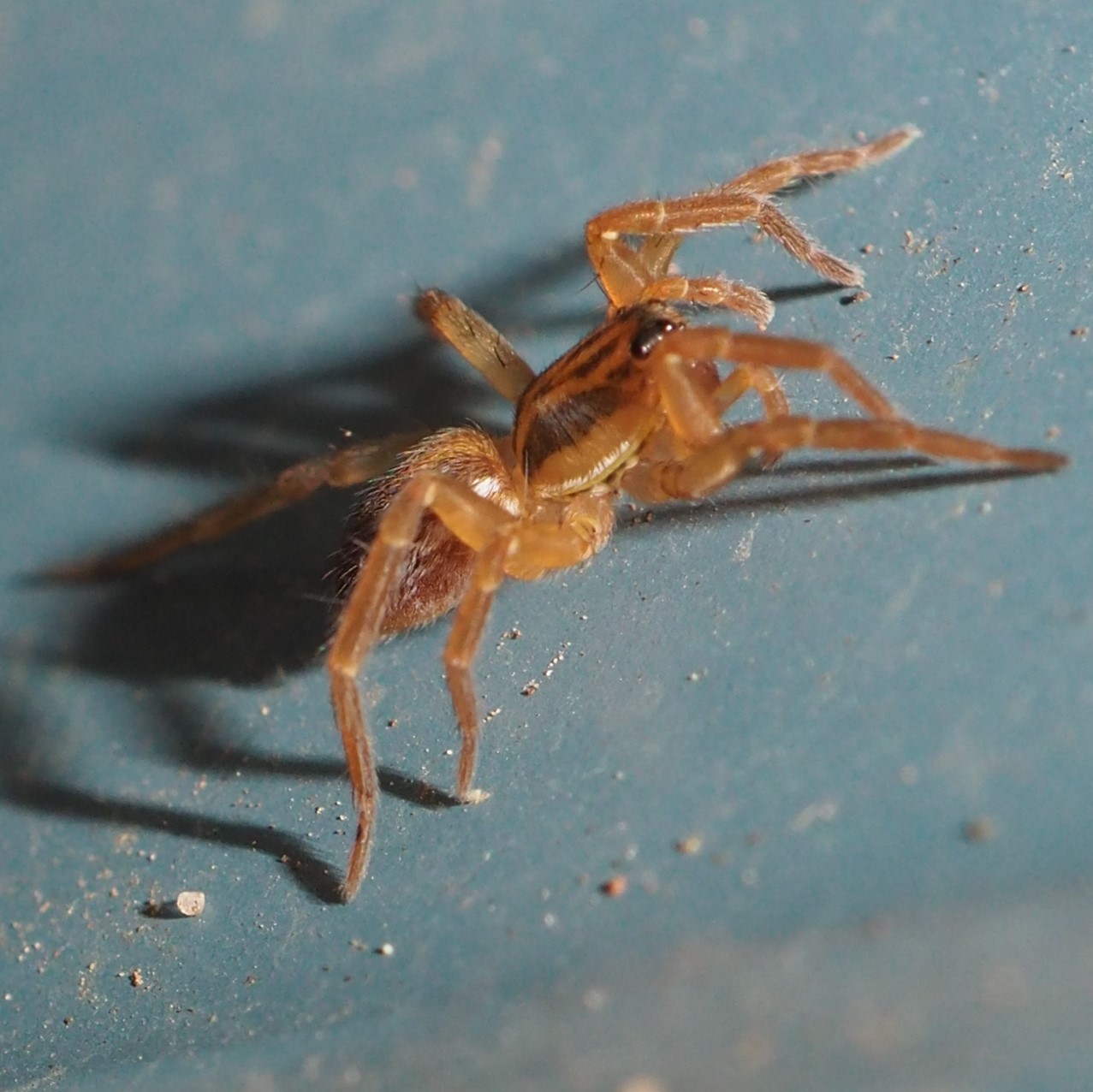
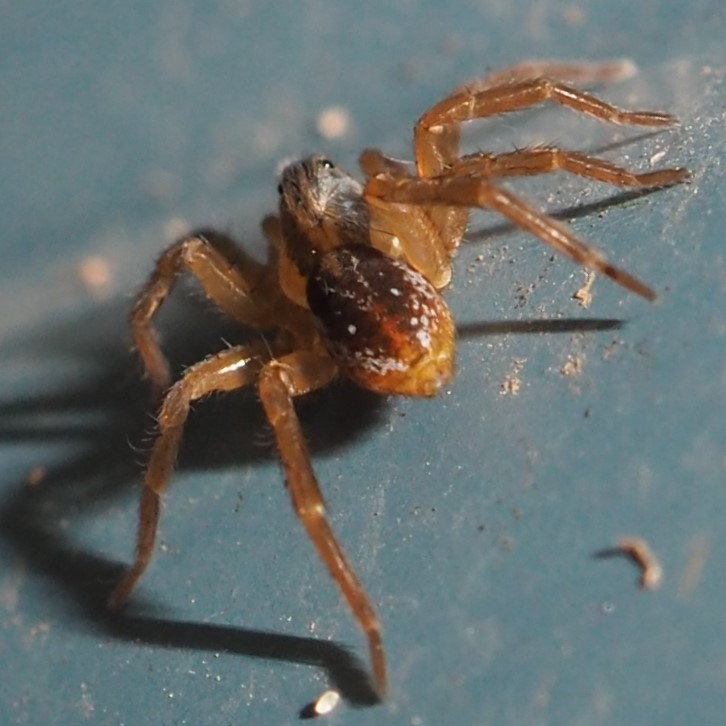
My favorite little Jumping Spider, the so-called Flea Jumping Spider, is back this week. Here it is facing us so you can see the Headlights, the huge eyes that practically guarantee your spider is a Jumper. These spiders are tiny, but here is one having supper on an Ant. I thought at first it was eating a Dwarf Spider, but Matt corrected me. The third picture shows the lovely enchanting furry pattern on top of the abdomen.
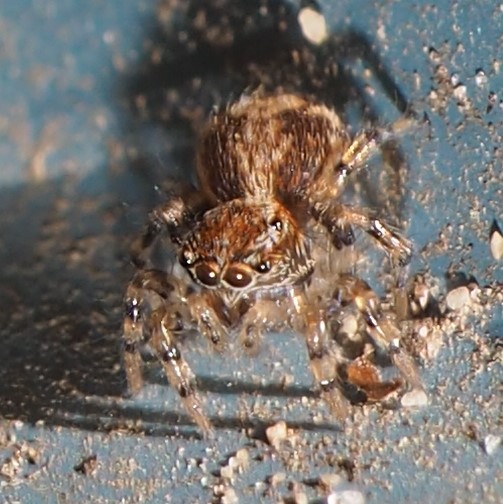


Just a few more little vignettes. Here is the Purple Hellebore - what a growth spurt it has undergone! Redbud saplings all over the yard are starting to bloom. And the most beautiful mauve primrose is sneaking blooms from under some overgrowth below the deck.
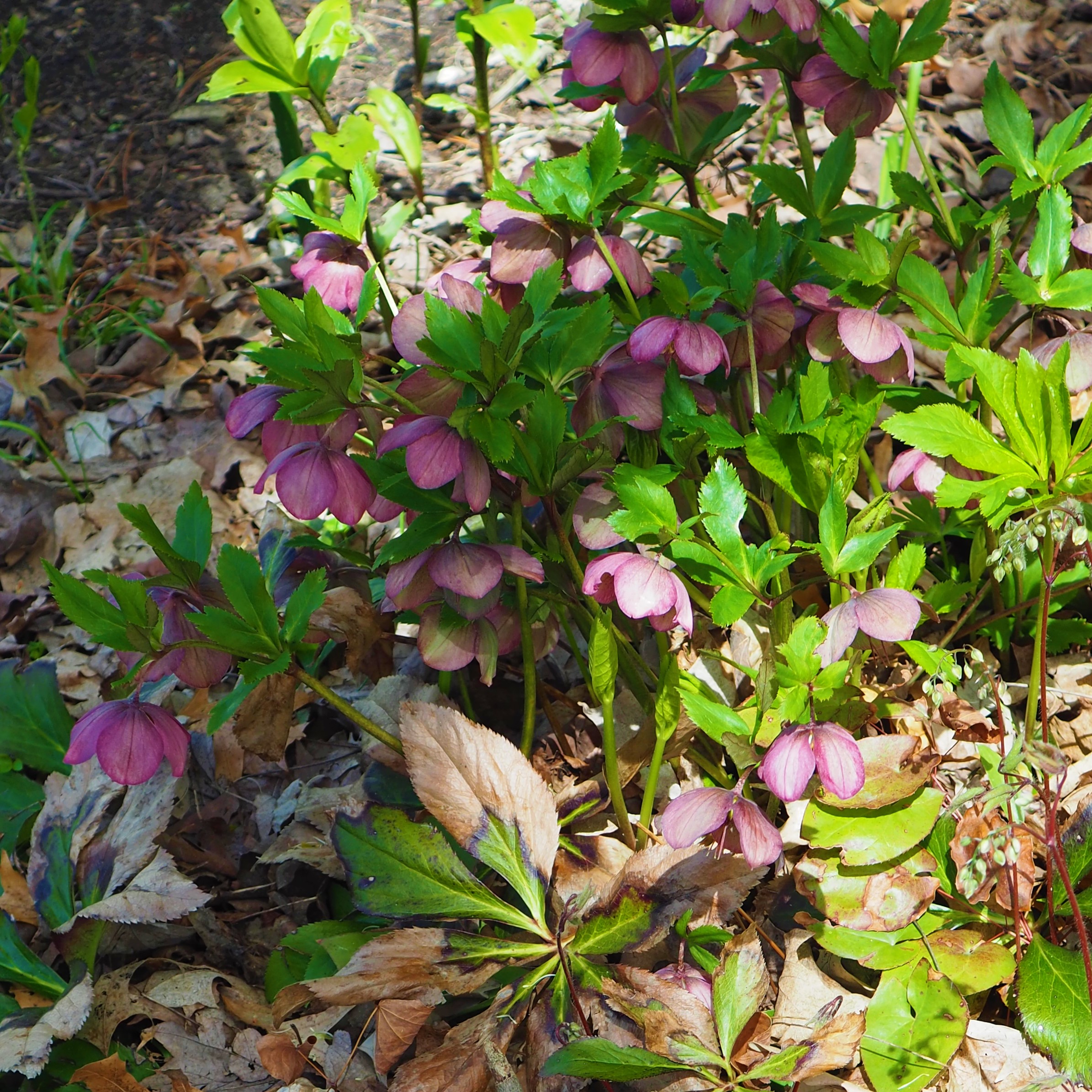
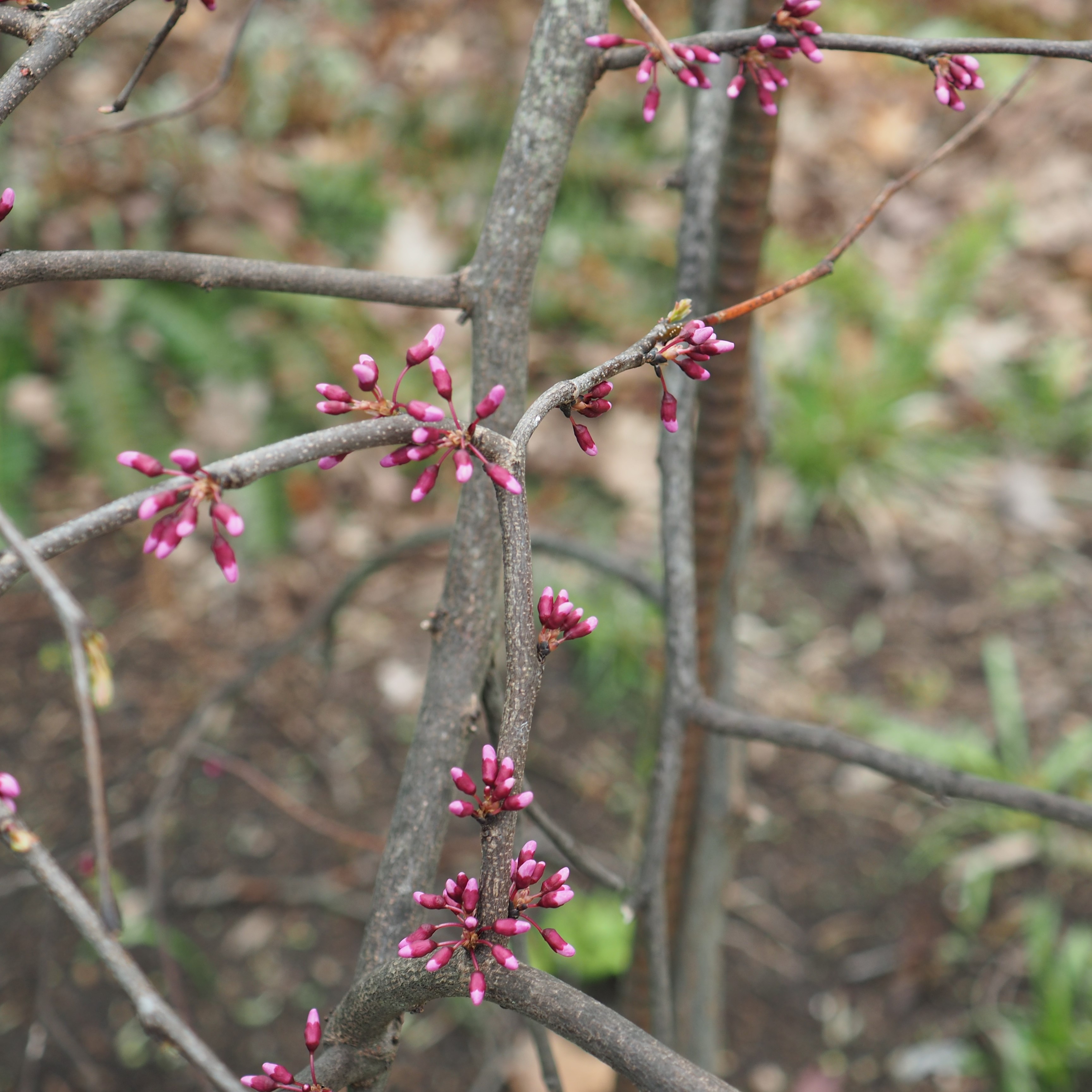
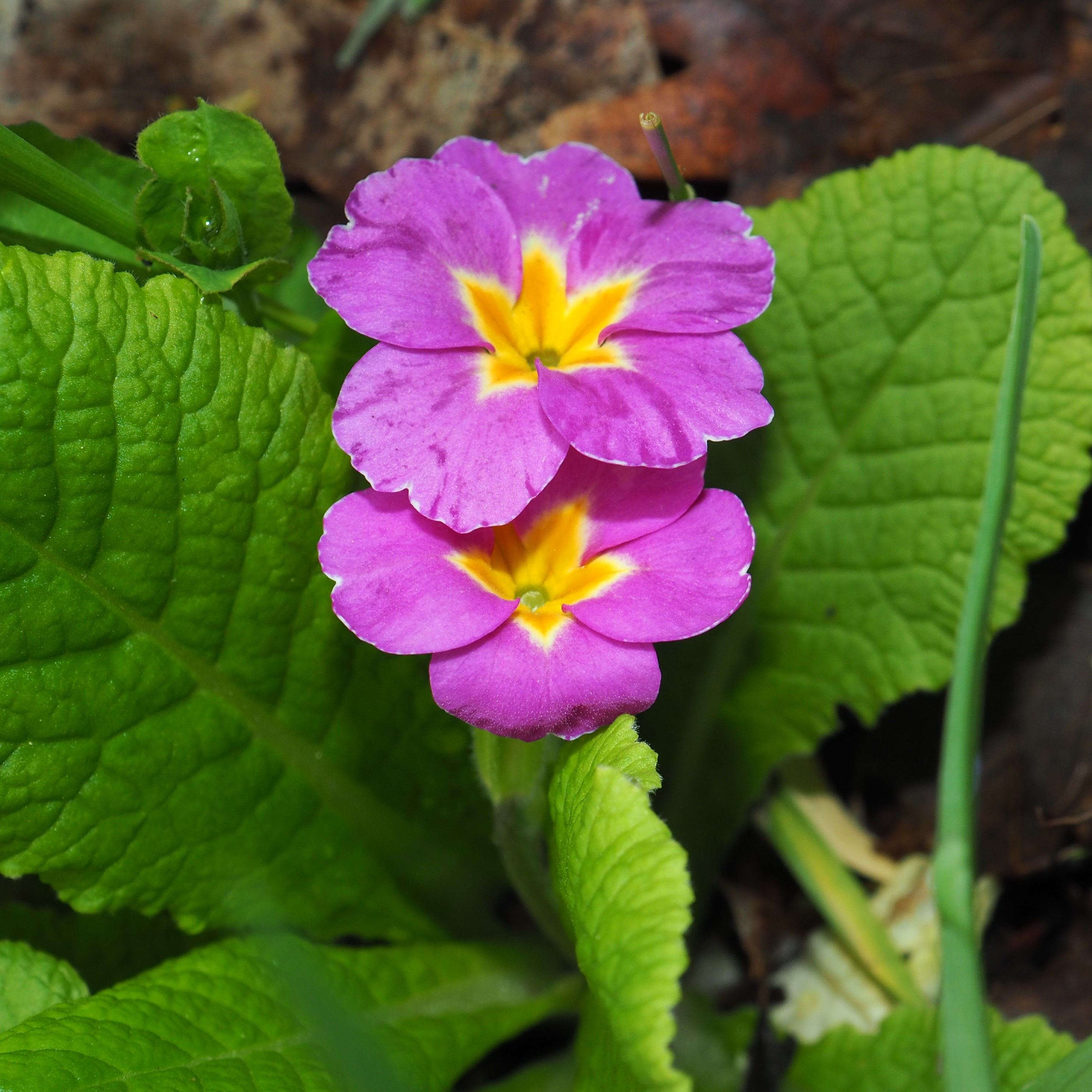
Be well, everyone. I hope you all have a place to retreat to when the world seems wearisome. Spring and fall are both glorious seasons - enjoy!
Love, Martha
Back to April 28, 2019
Forward to May 12, 2019
Back to main menu
copyright Martha O'Kennon 2019























































































